Cómo Funciona
Todo lo que necesitas saber, desde la ciencia detrás de la tinta hasta cómo aplicarla, cómo se desvanece y cómo conseguir tu propio tatuaje.

.png?w=1390&auto=format)
.png?w=570&auto=format)
Bioabsorbible, biodegradable y de origen vegetal
A diferencia de la tinta de tatuaje tradicional, la tinta Ephemeral está diseñada para ser eliminada por nuestro cuerpo de forma segura y natural.
- Ingredientes de origen vegetal siempre que sea posible.
- Formulada sin metales pesados.
- Totalmente vegana.
- De un solo uso y esterilizada.
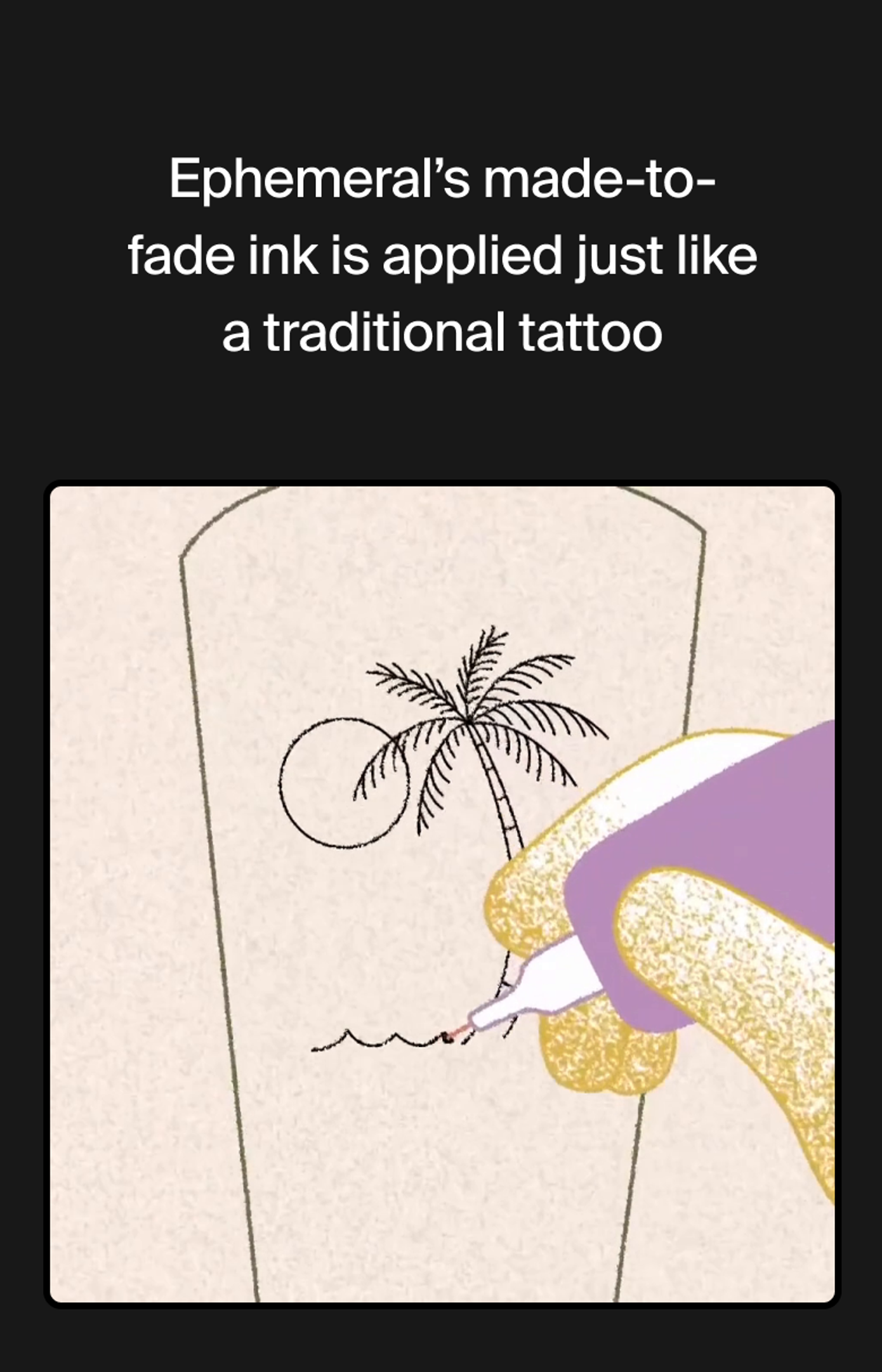
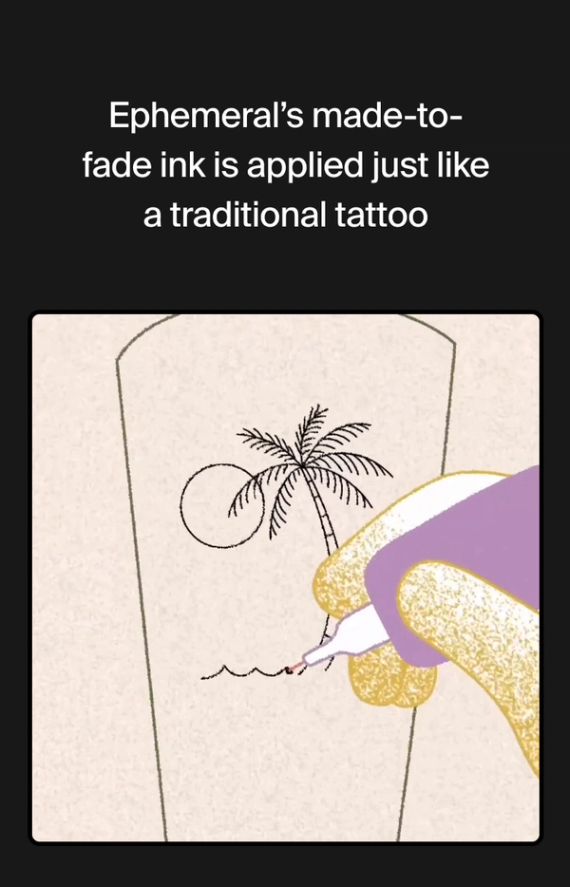
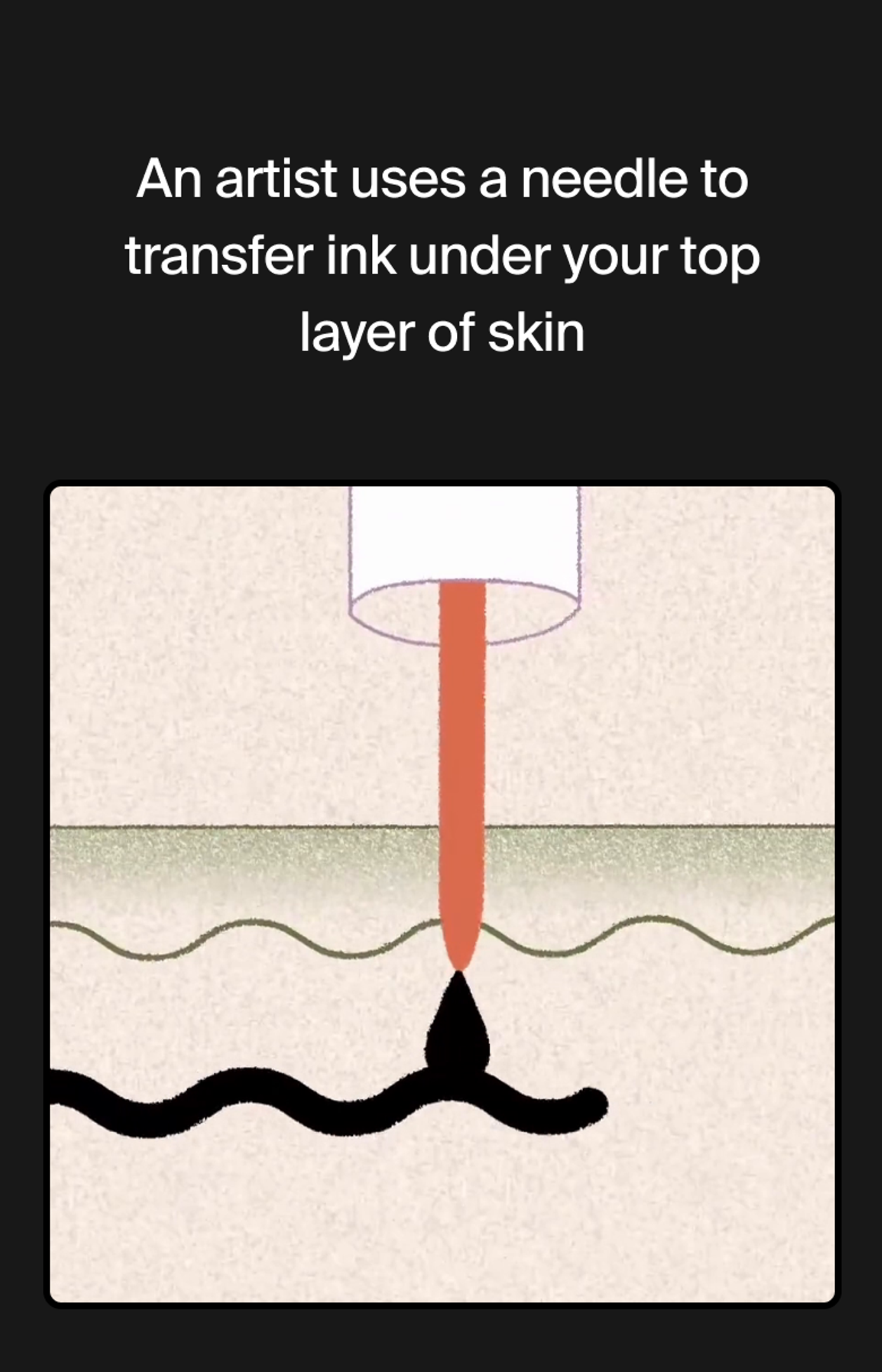
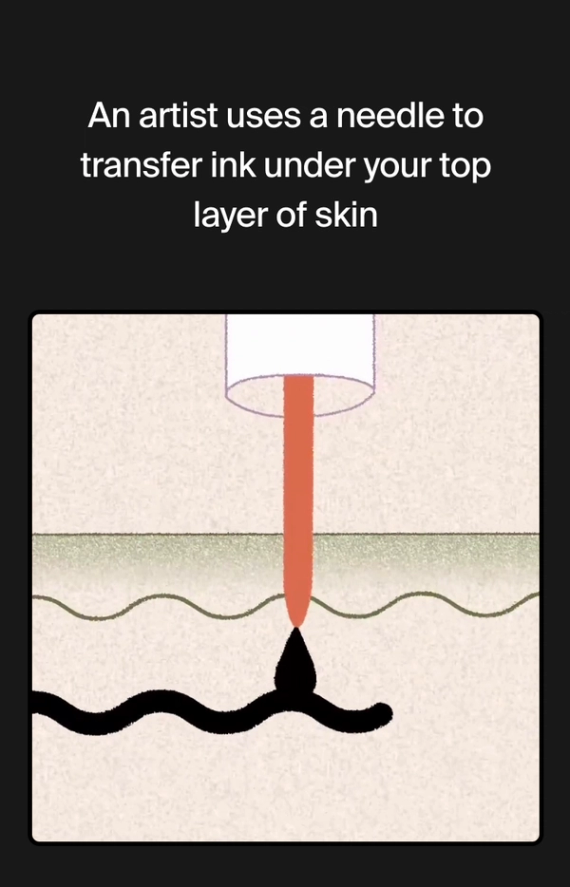
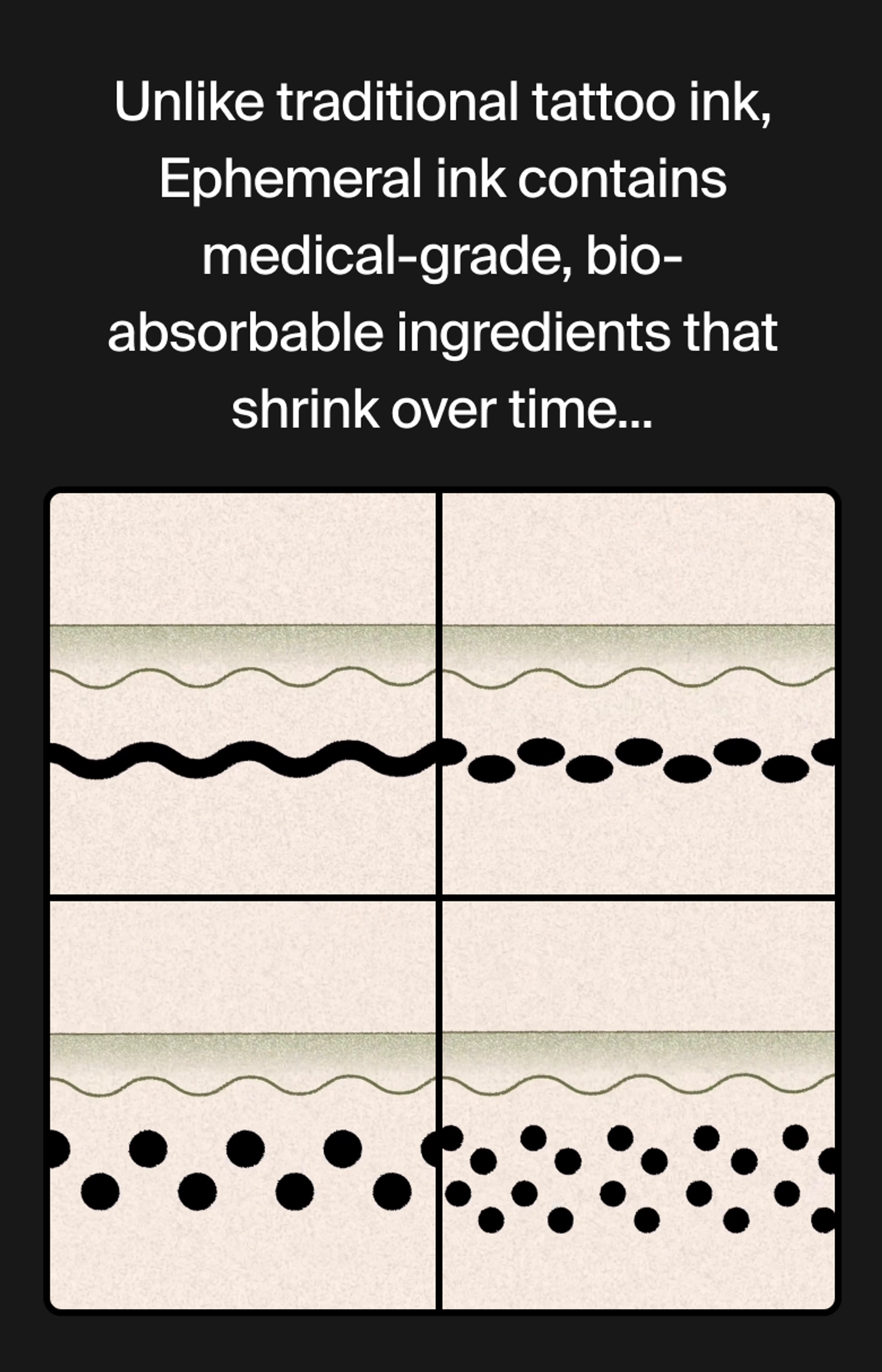

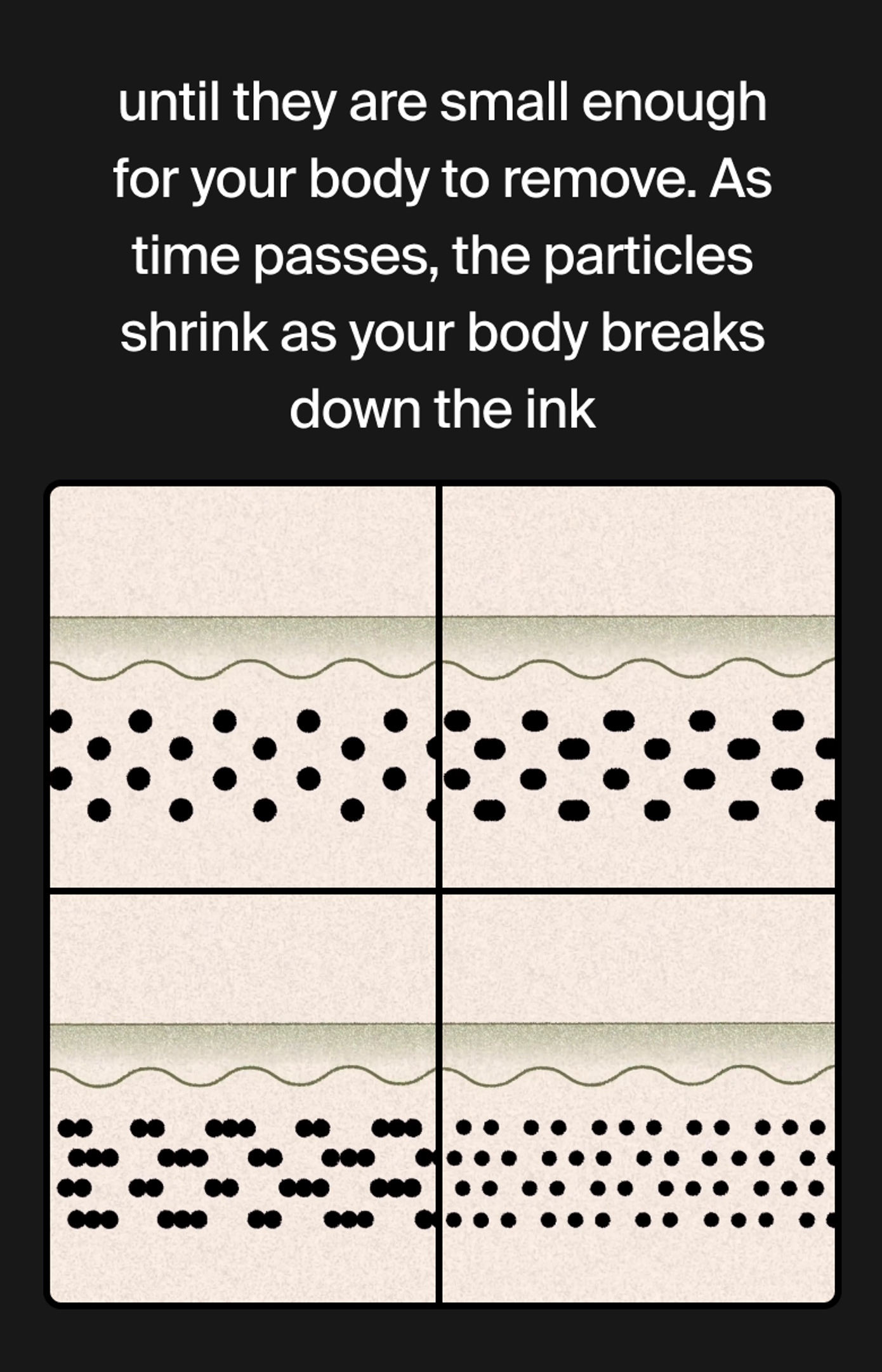
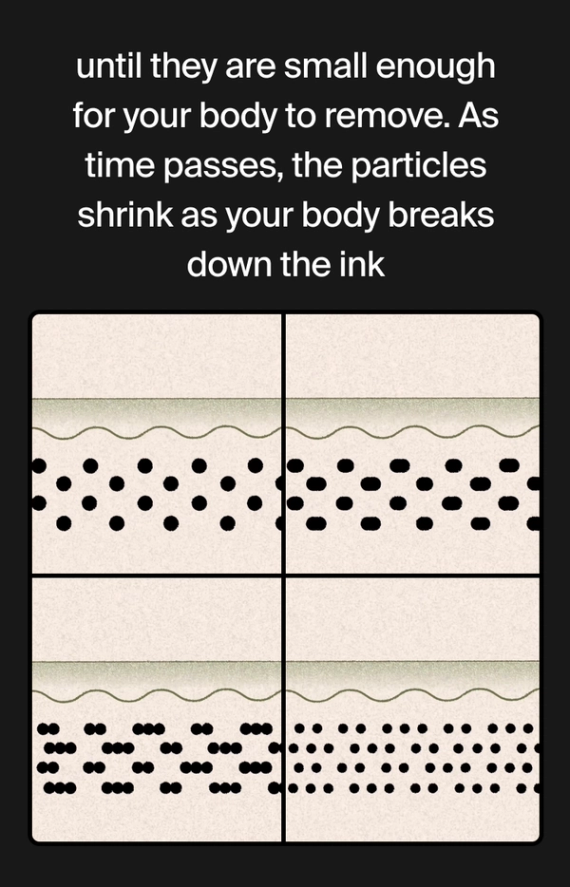

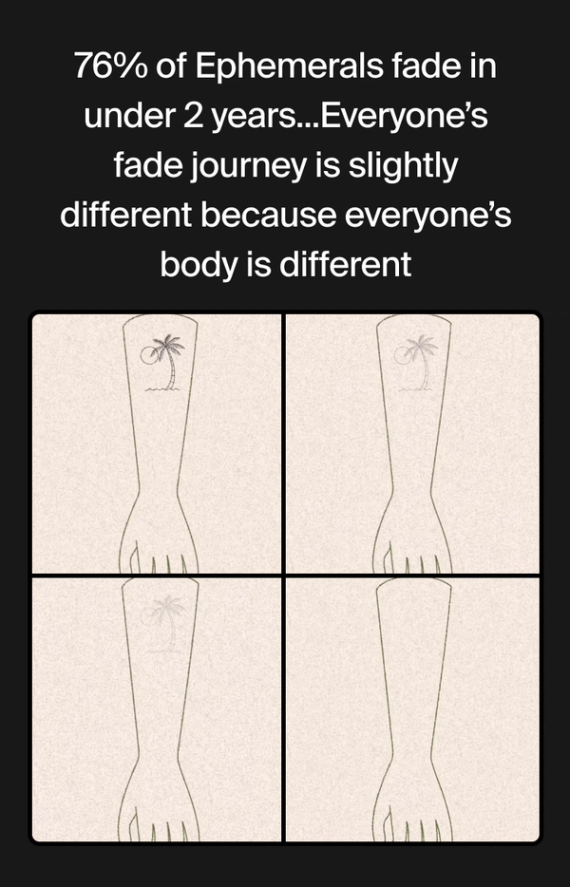
La ciencia detrás de la tinta










Tatuajes reales Ephemeral por artistas asociados
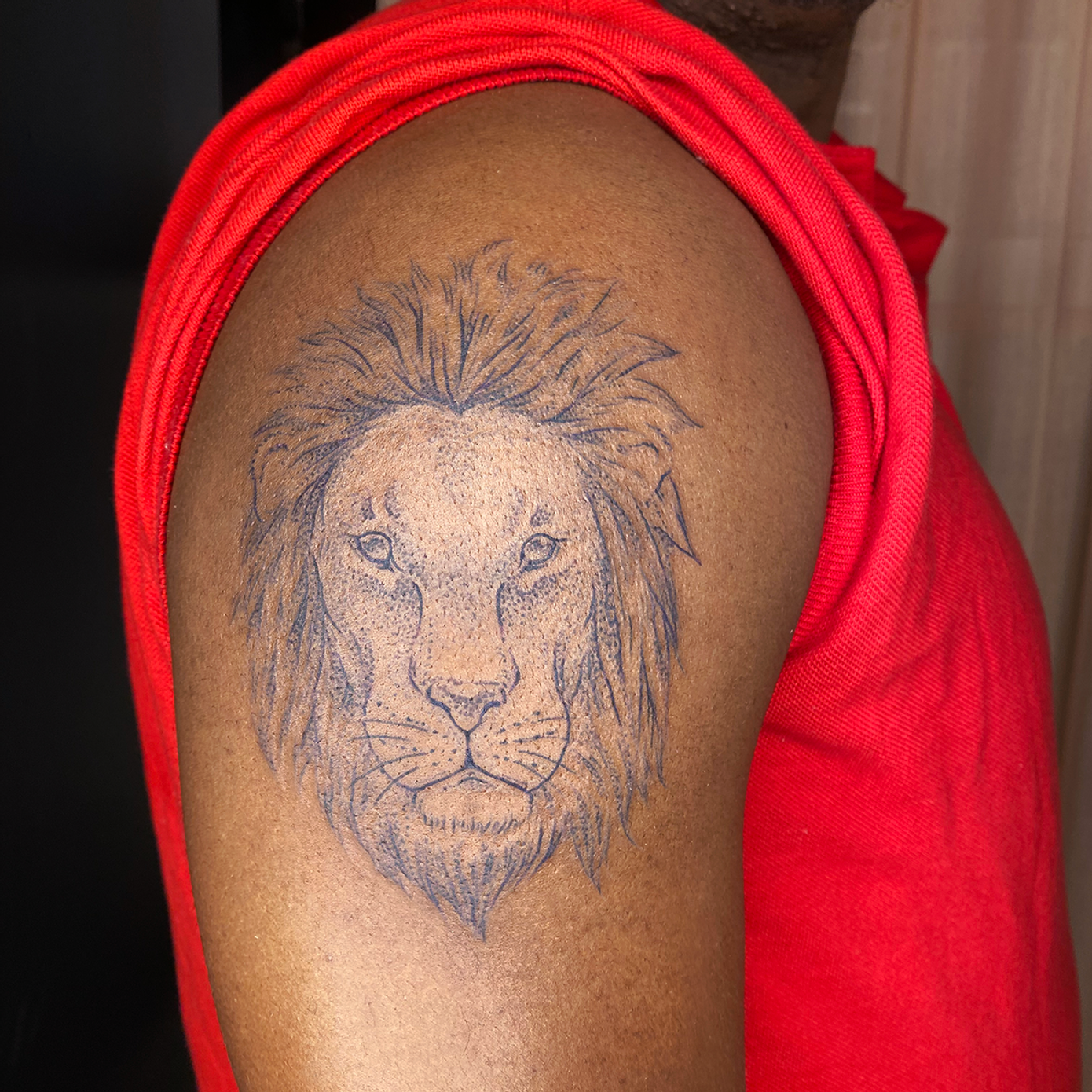
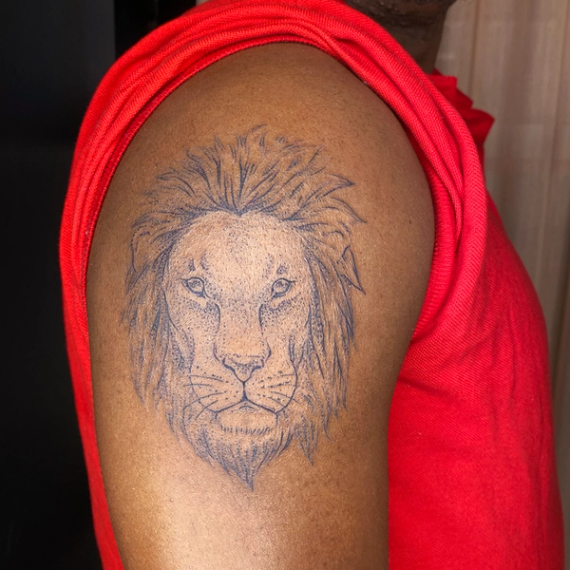
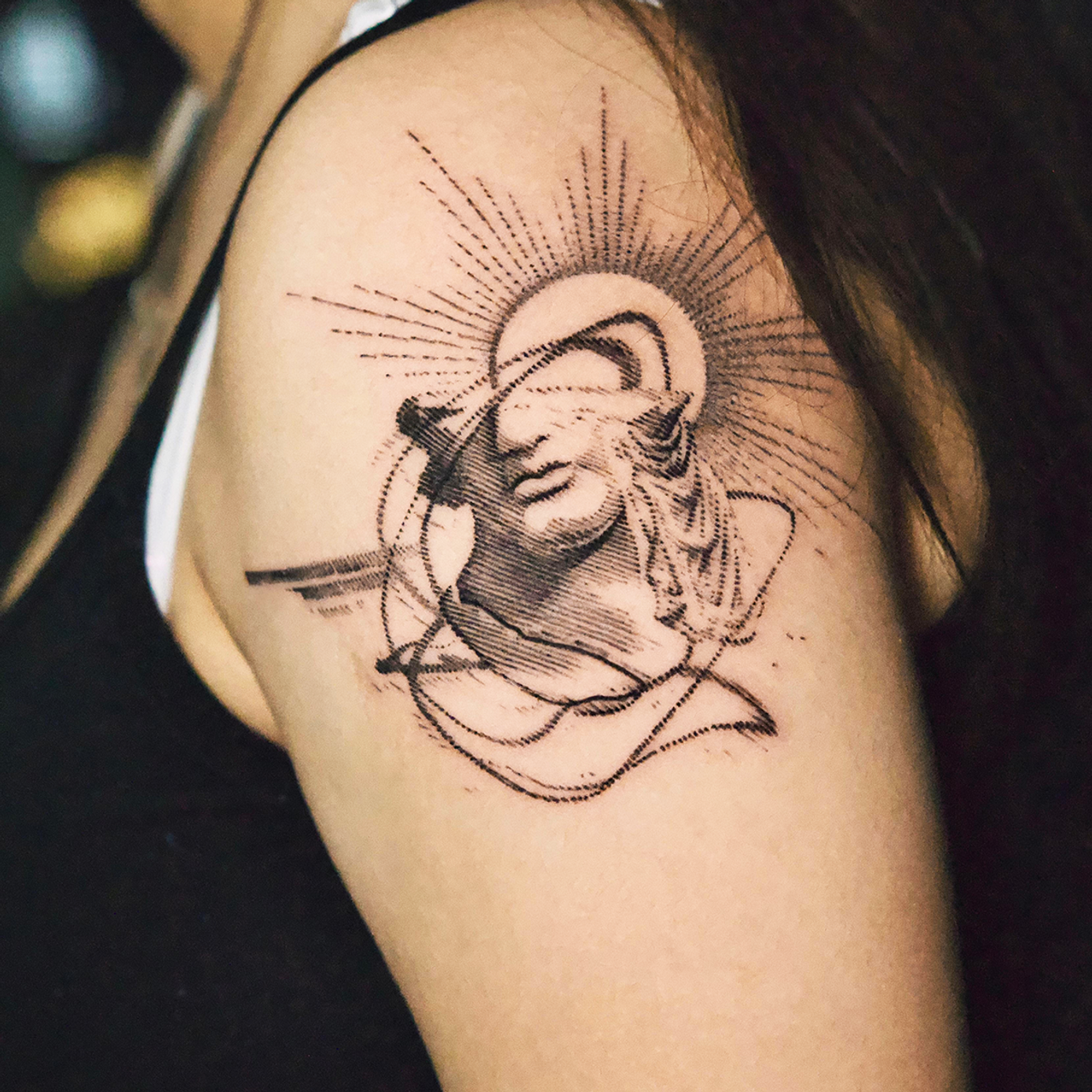

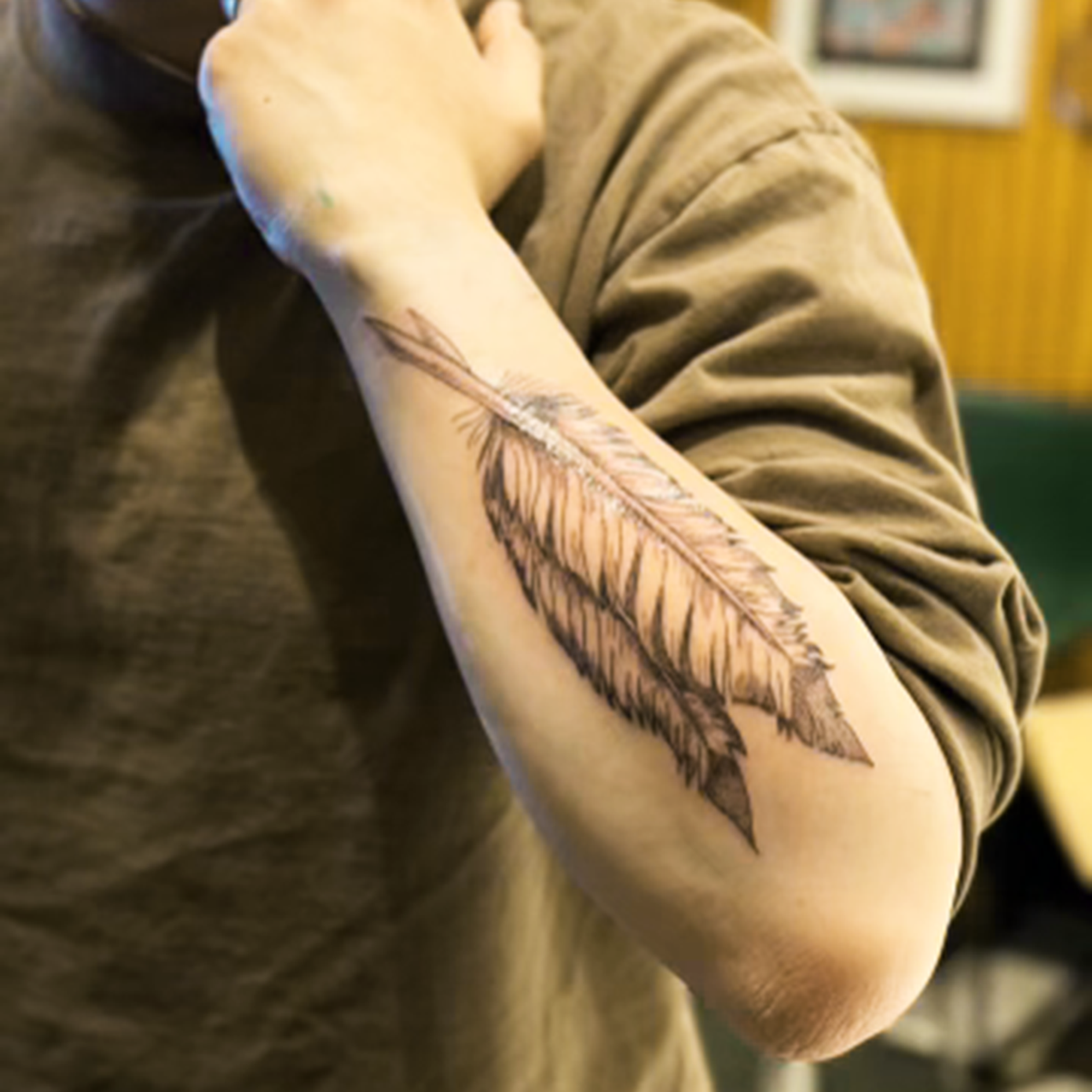
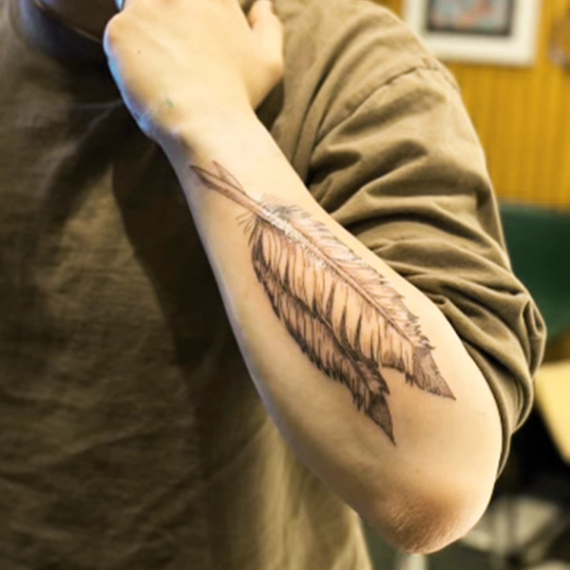
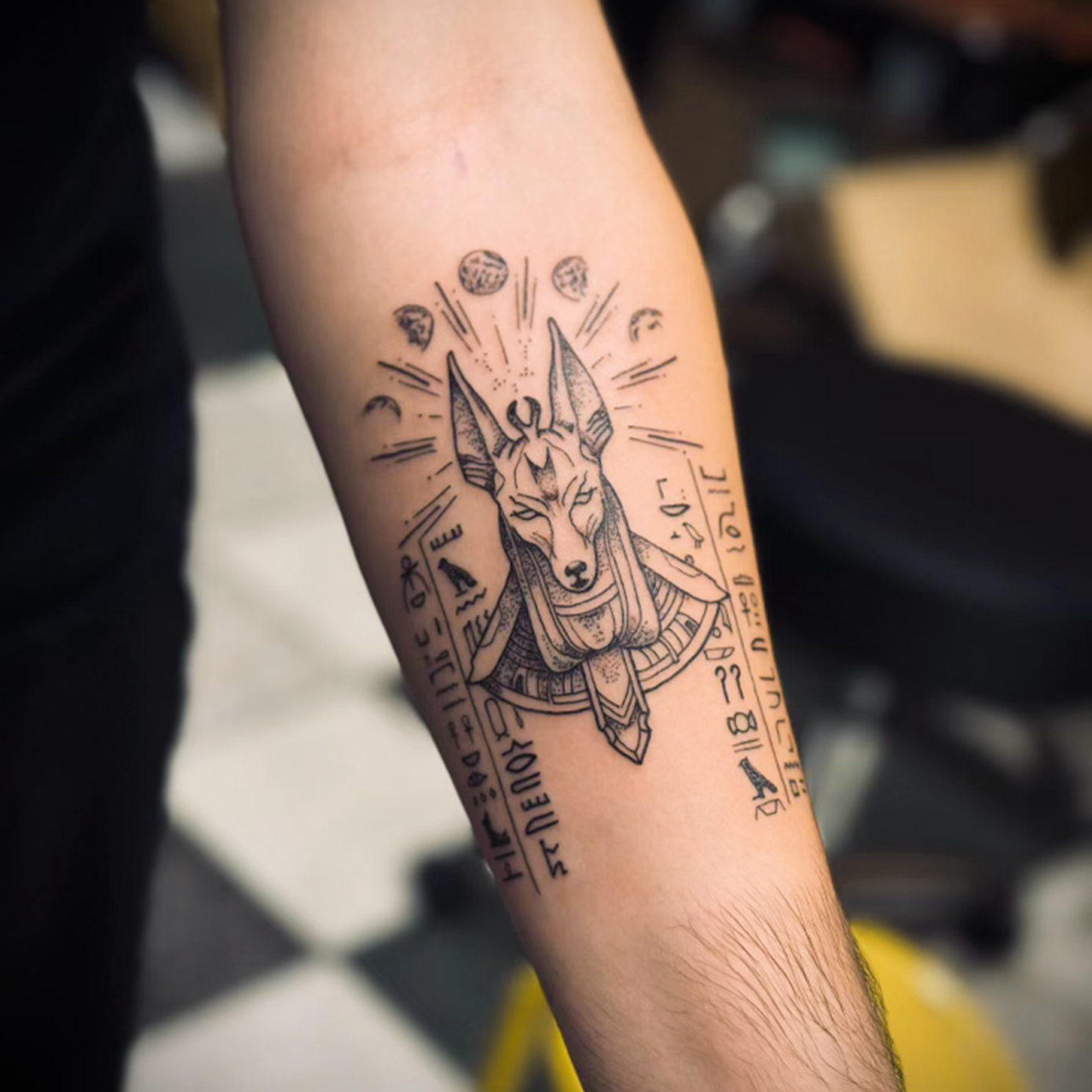
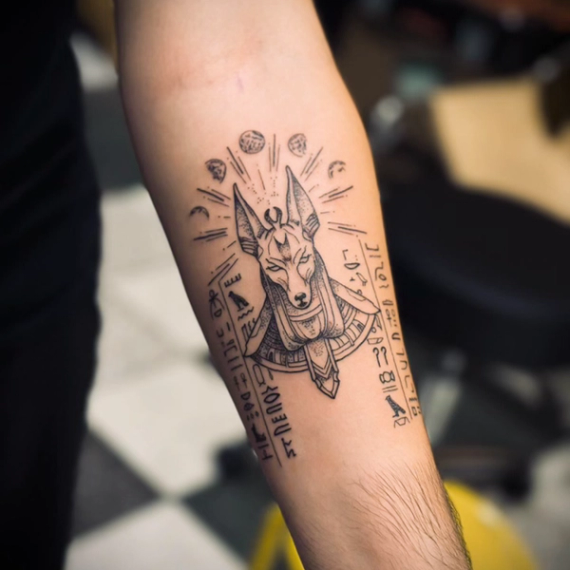
%402x.png?w=1390&auto=format)
%402x.png?w=570&auto=format)
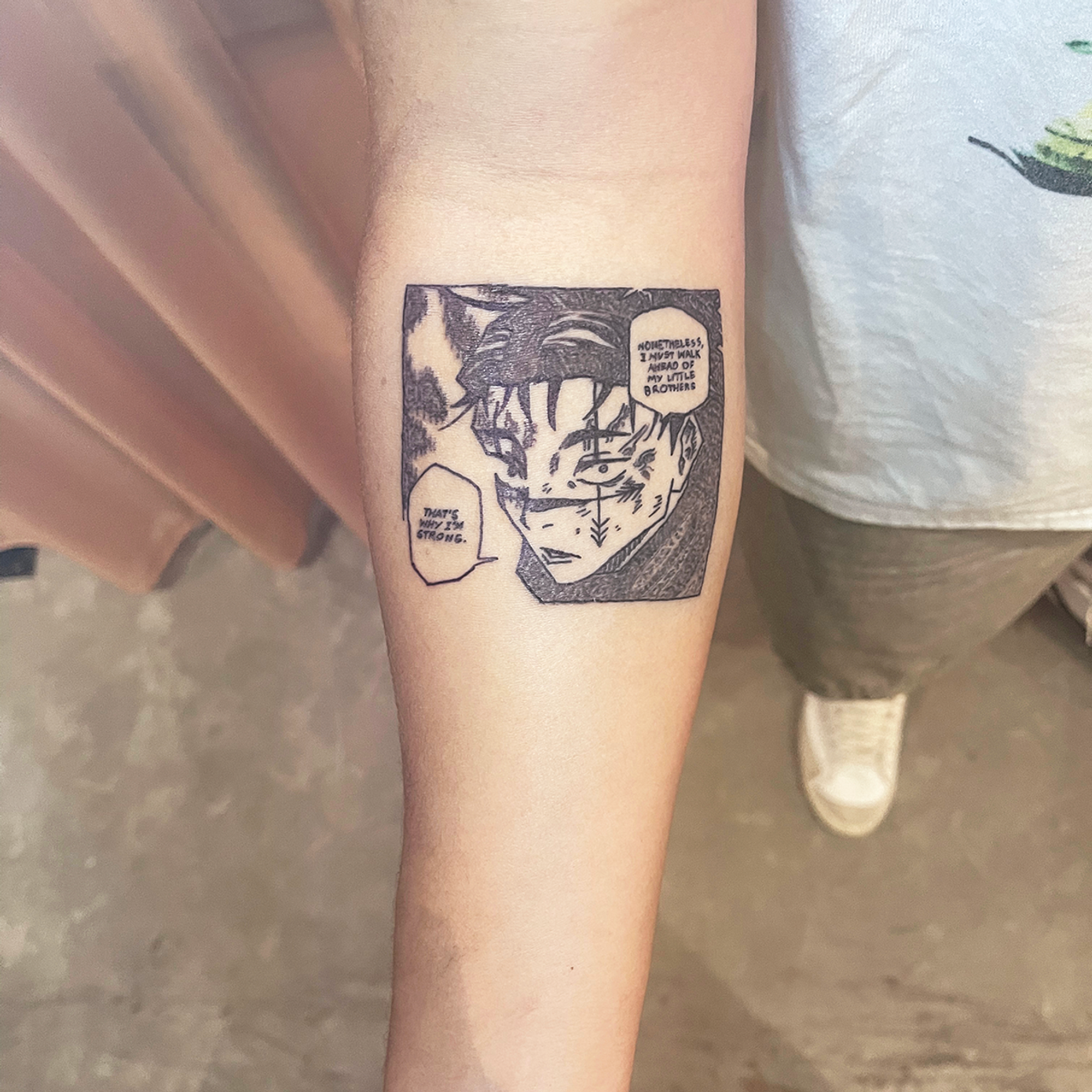
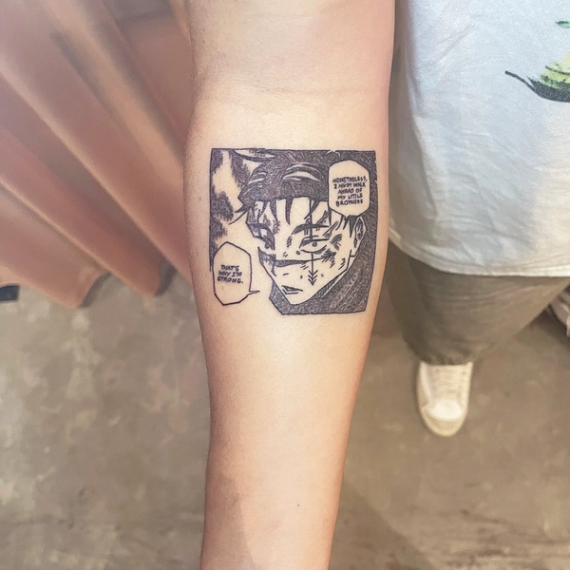
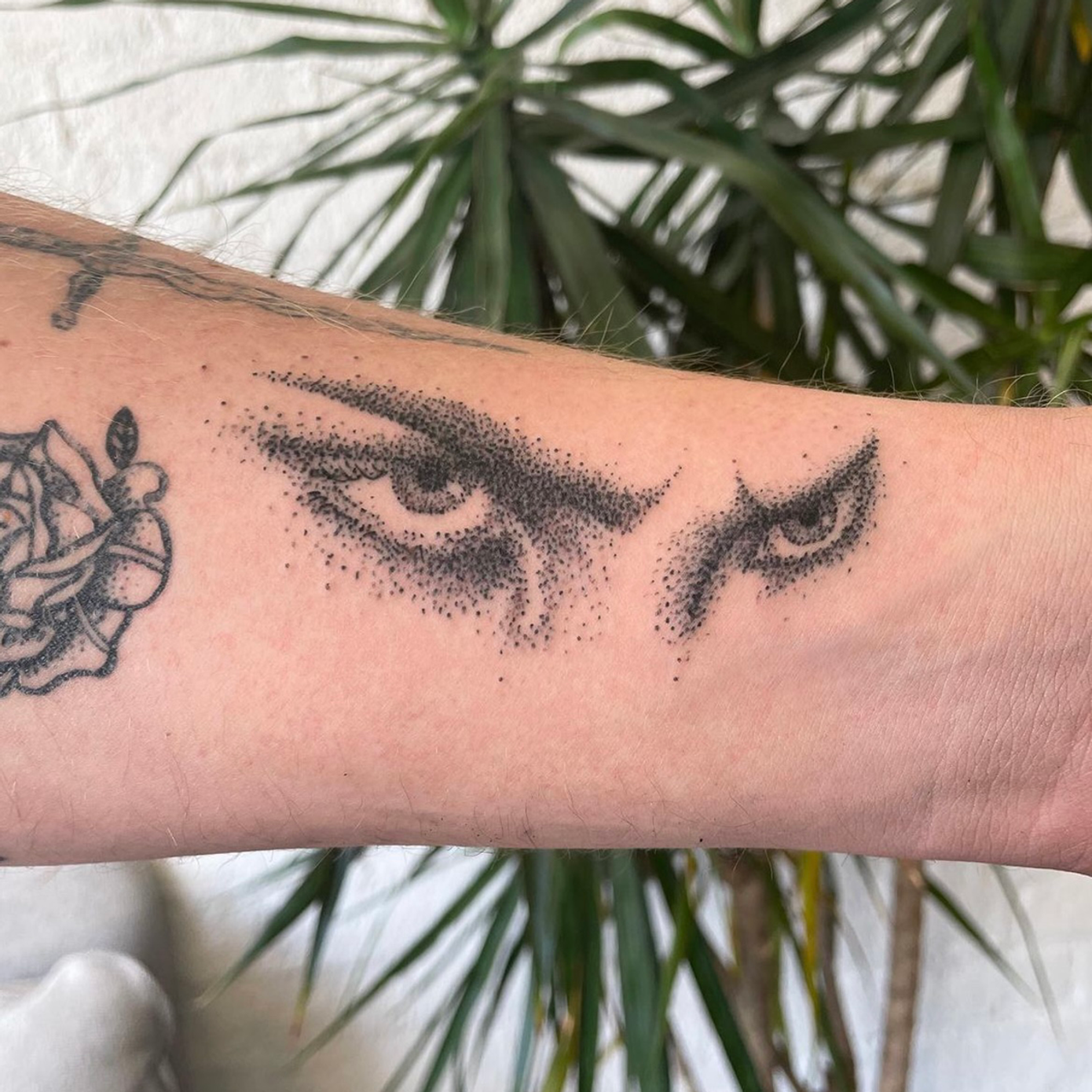
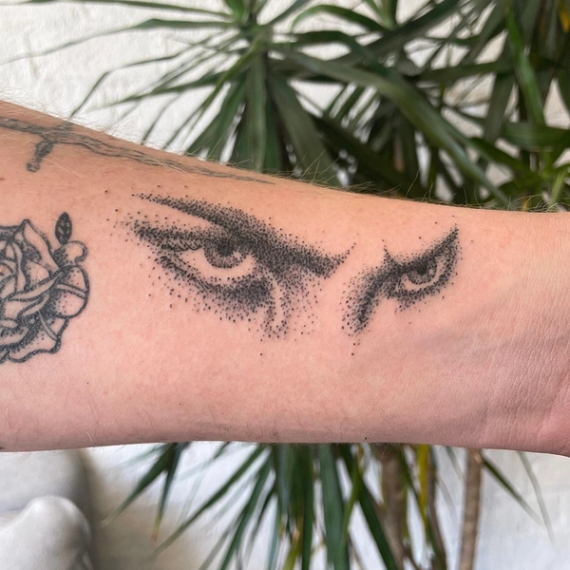
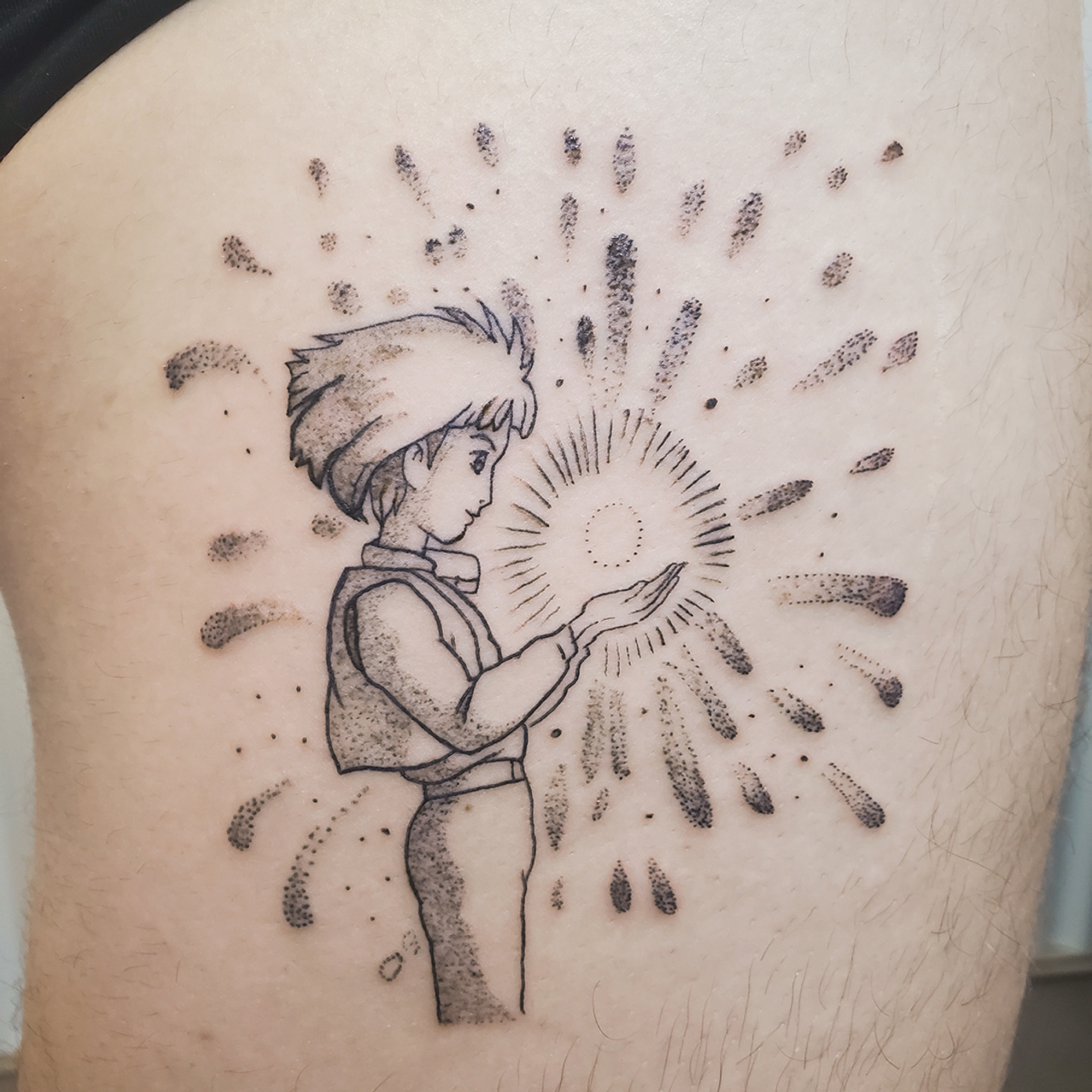
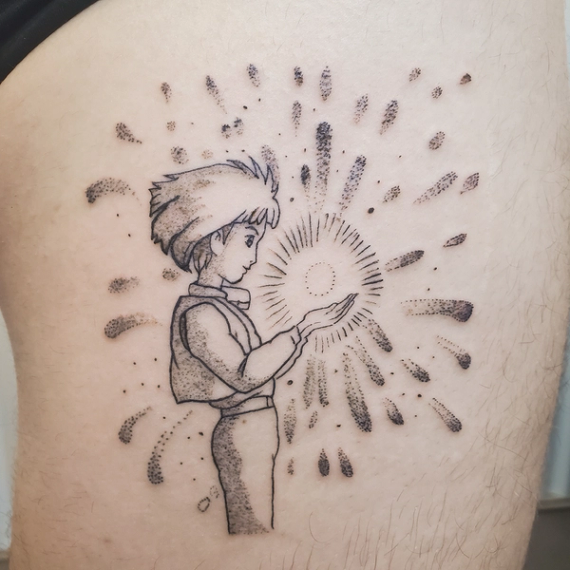
%402x.png?w=1390&auto=format)
%402x.png?w=570&auto=format)

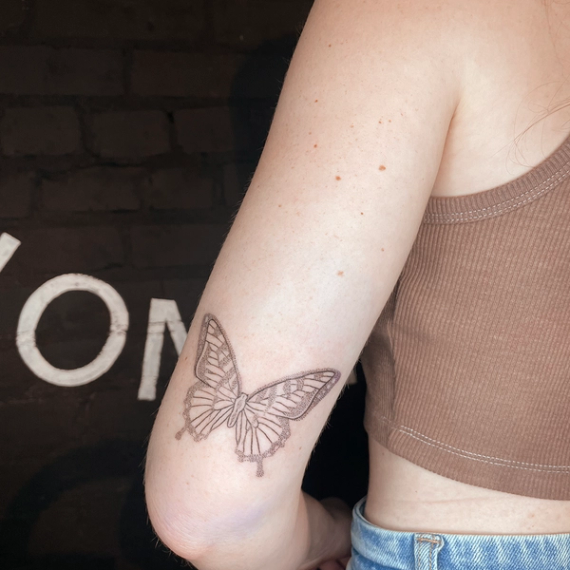
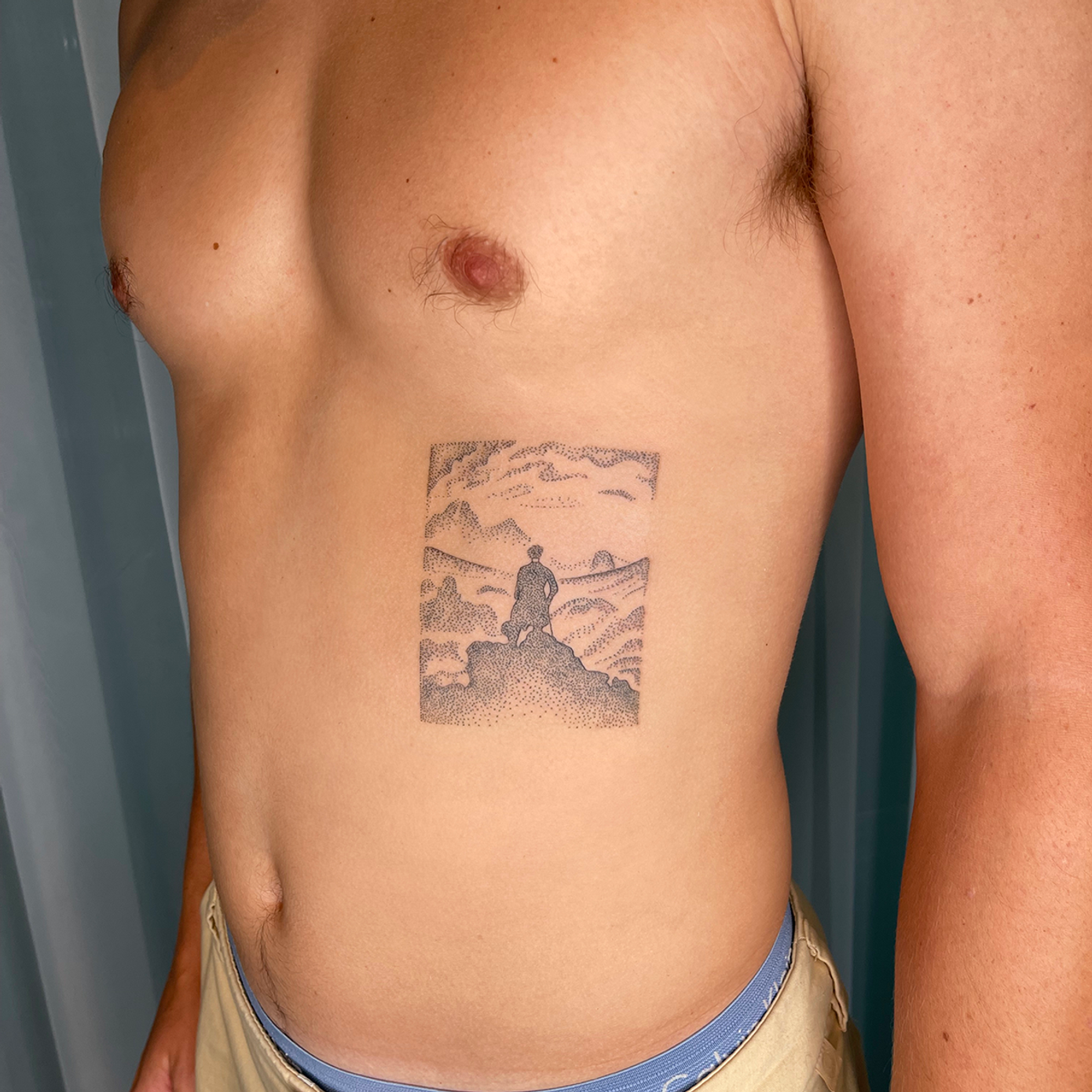
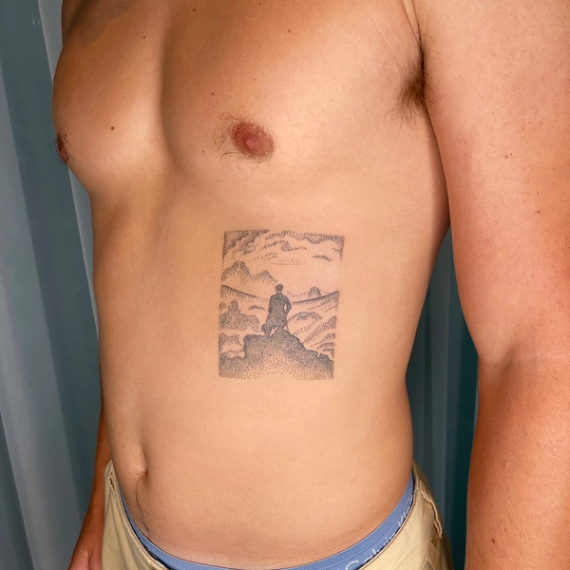
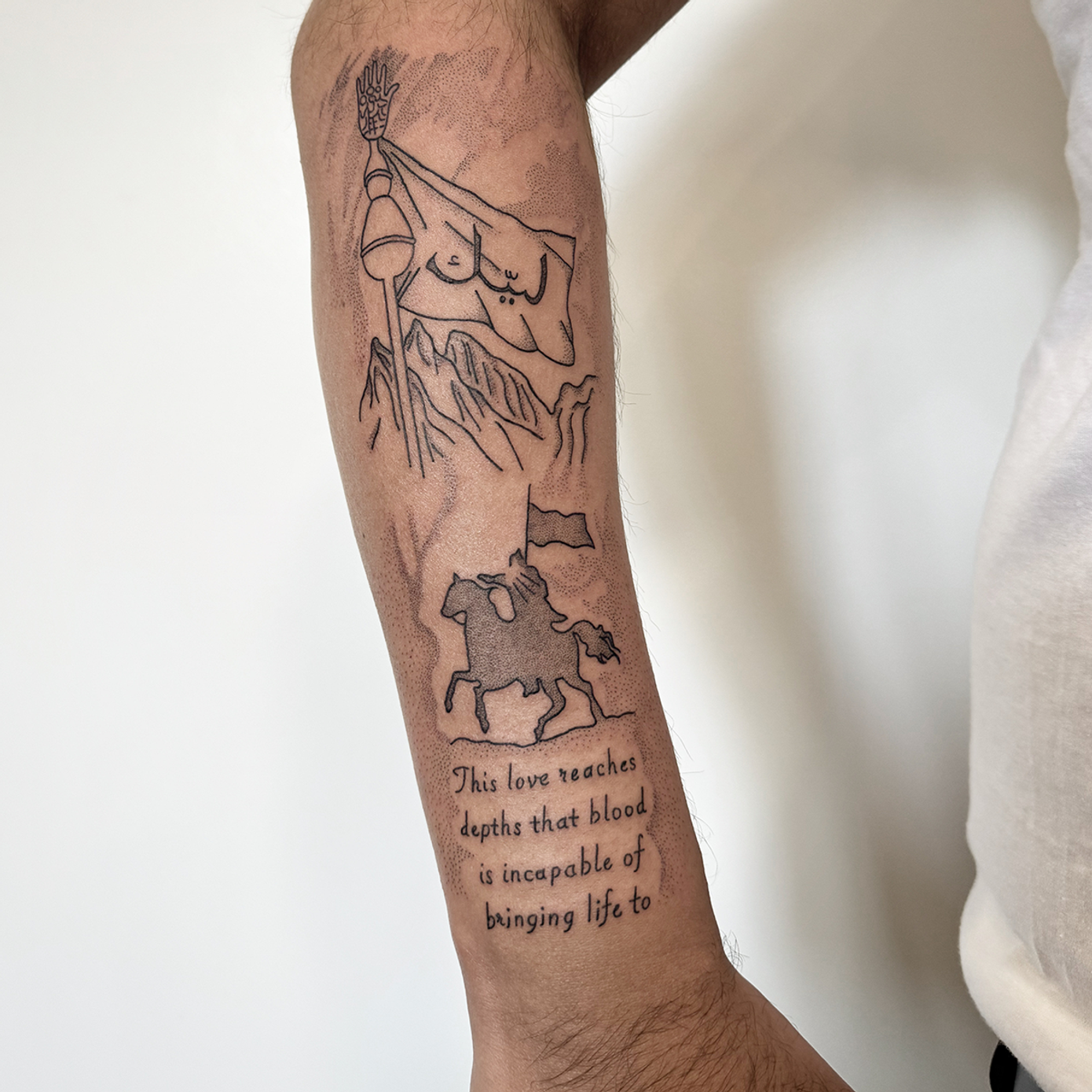
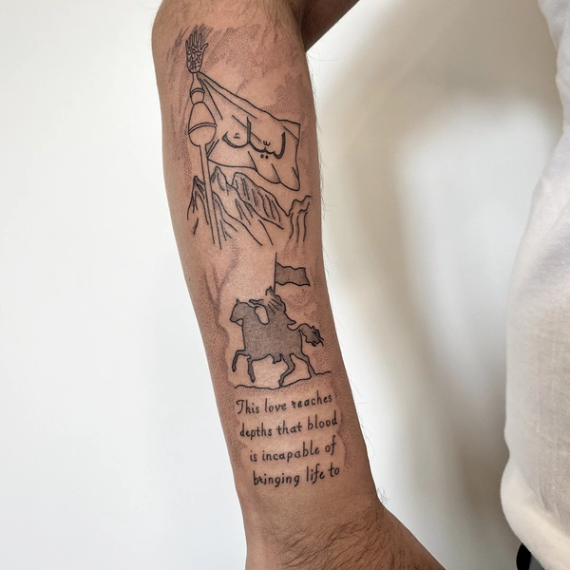
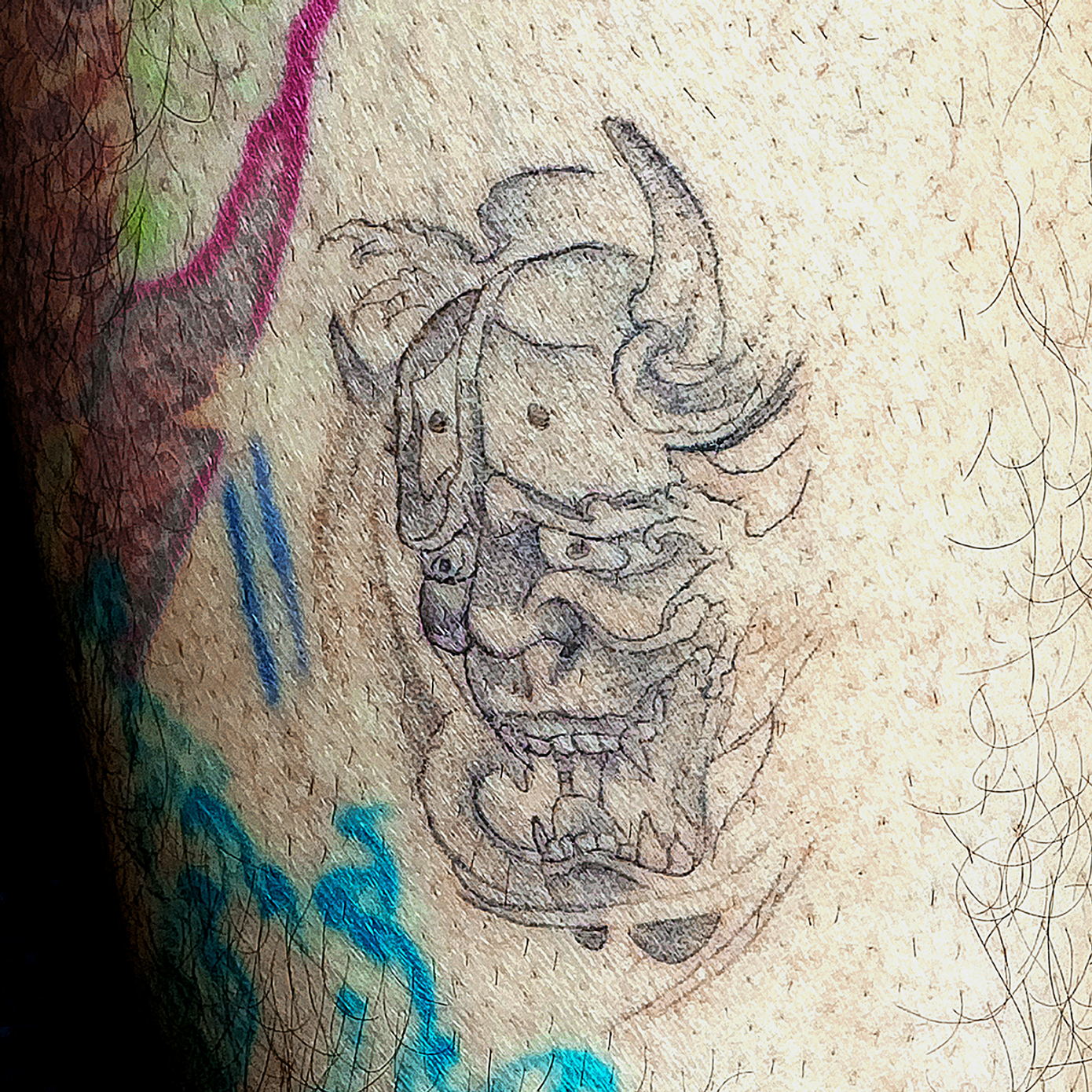
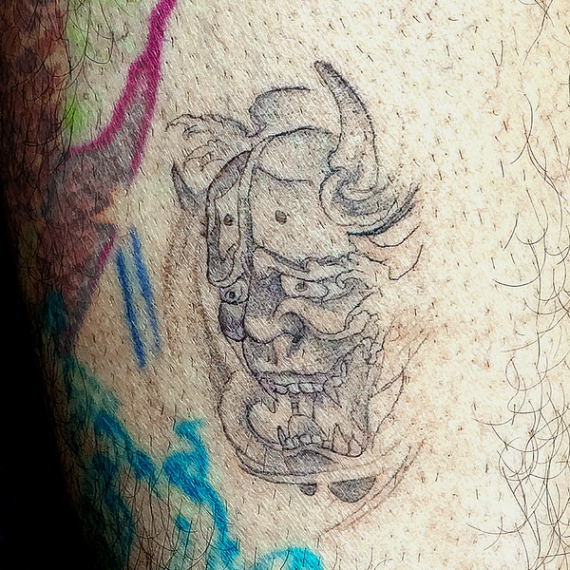
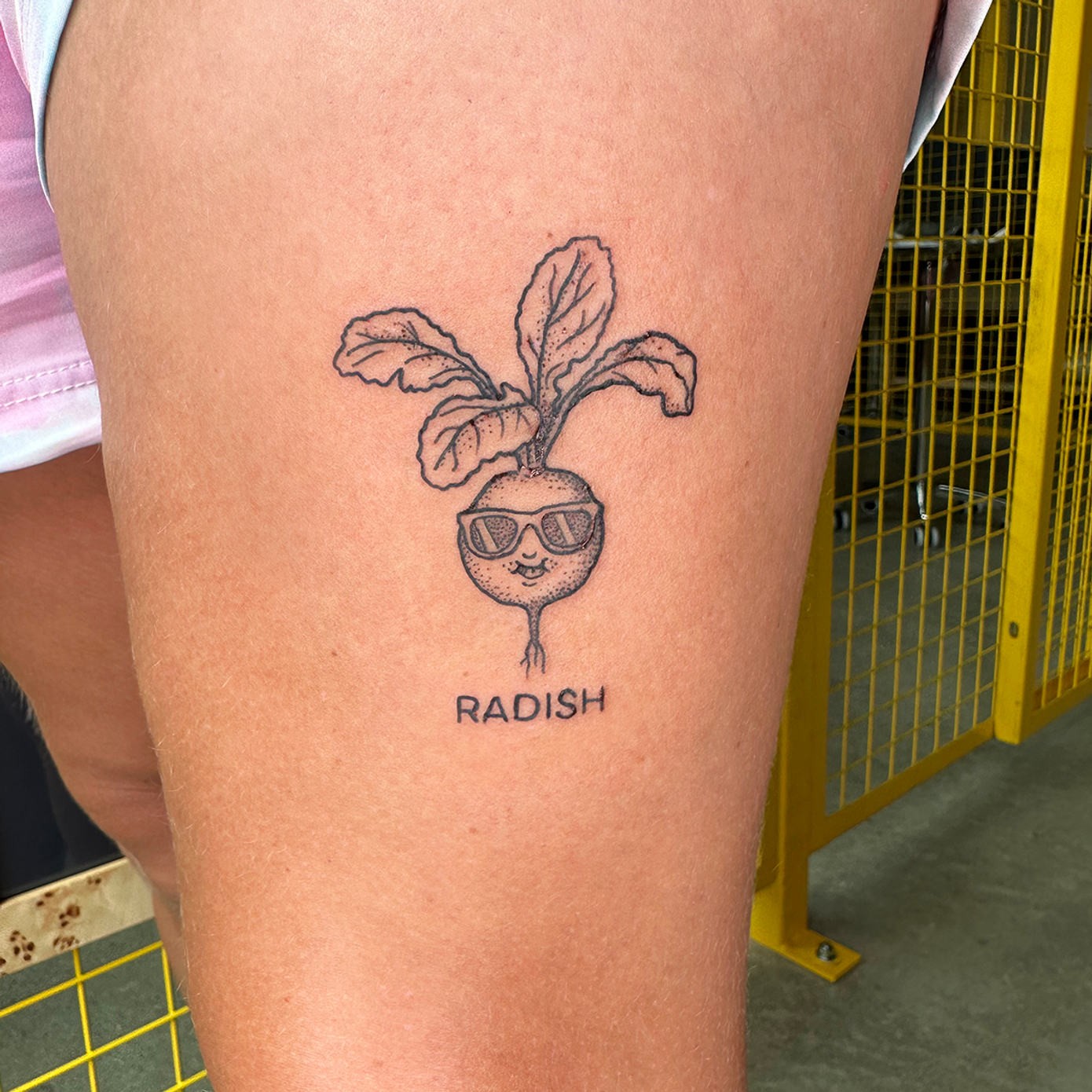
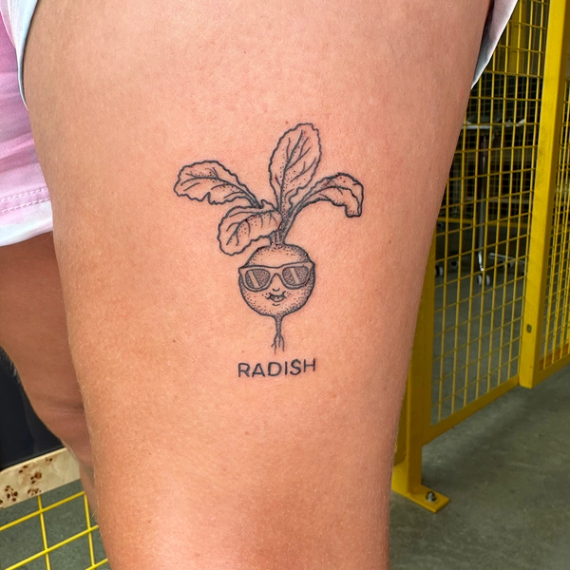

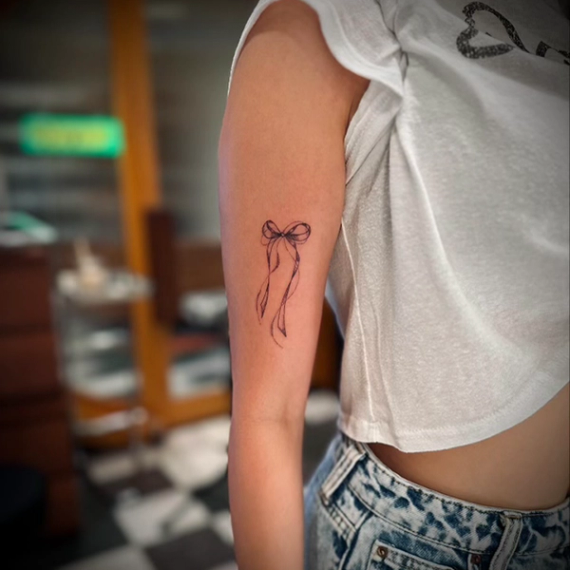

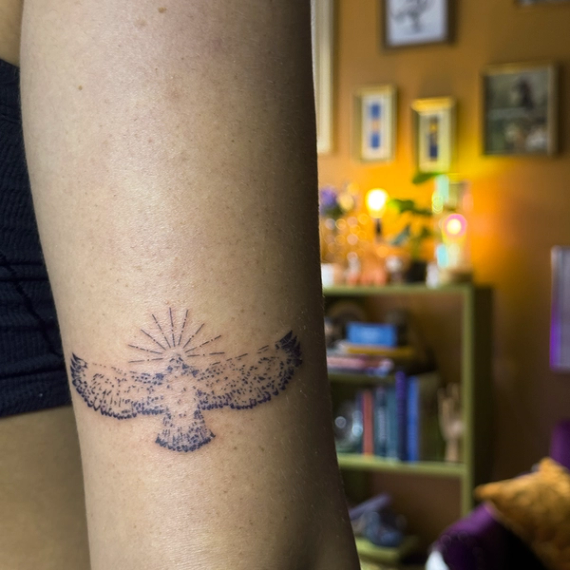
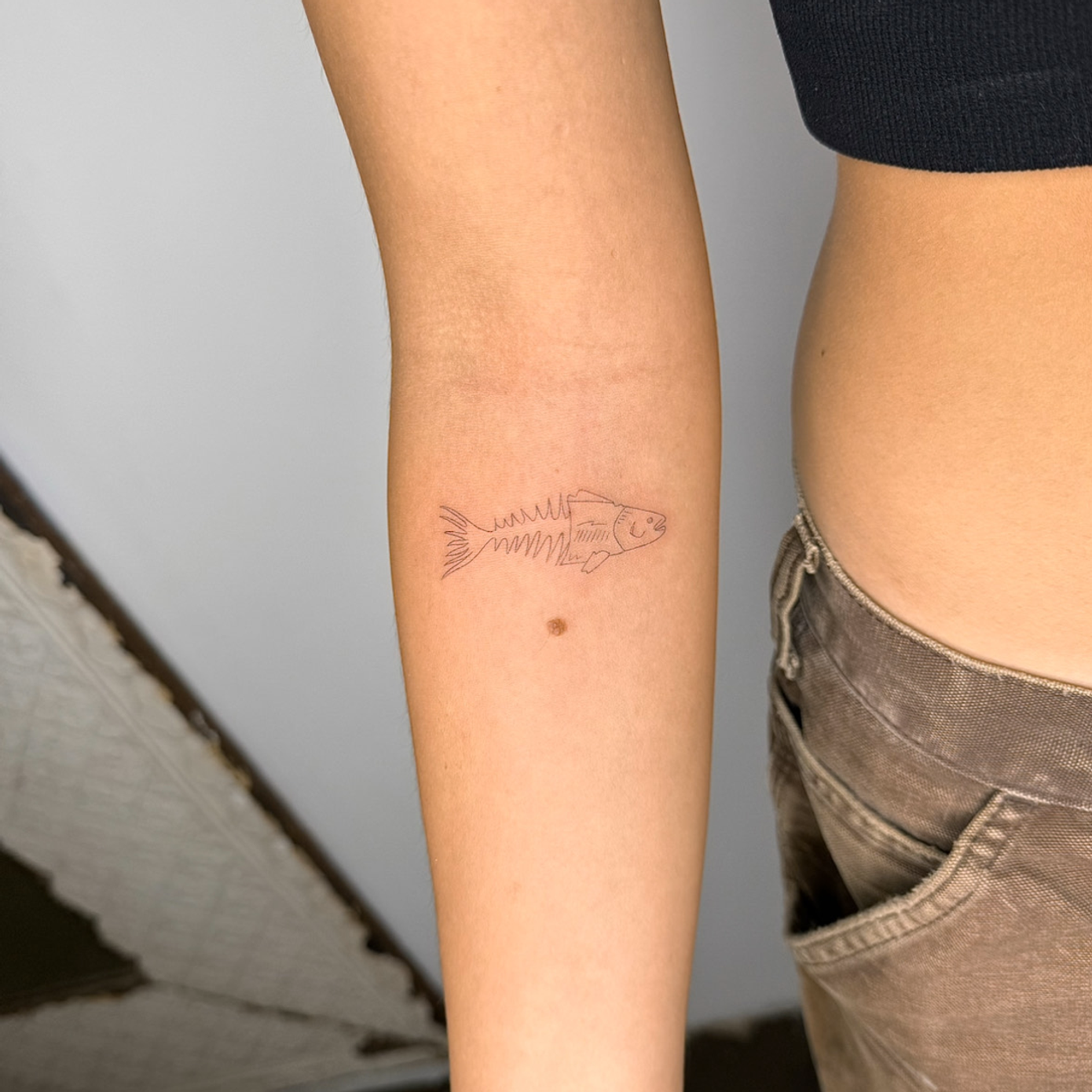
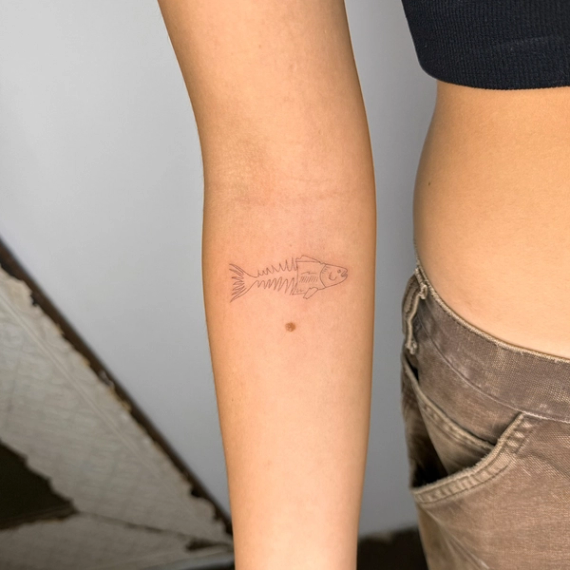
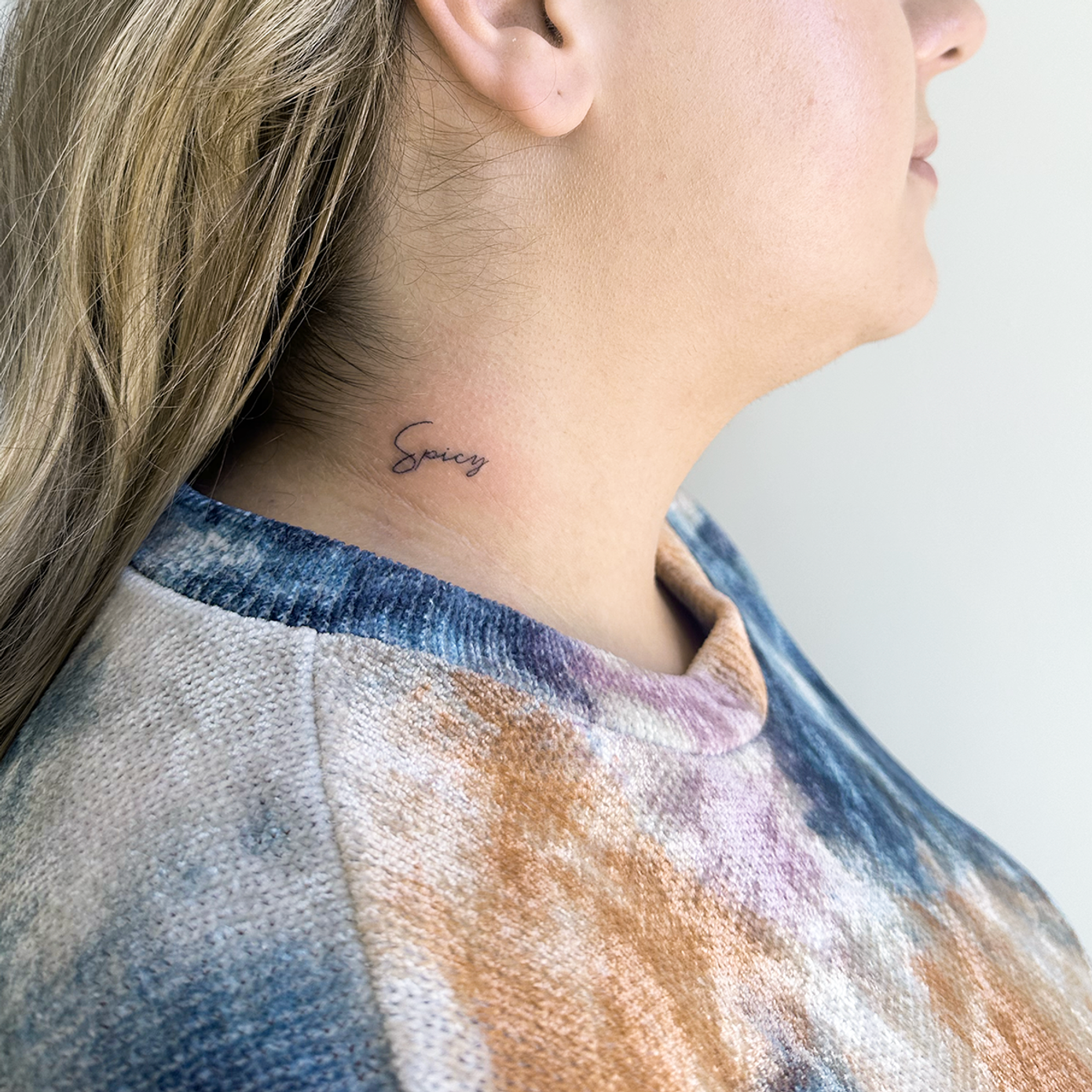
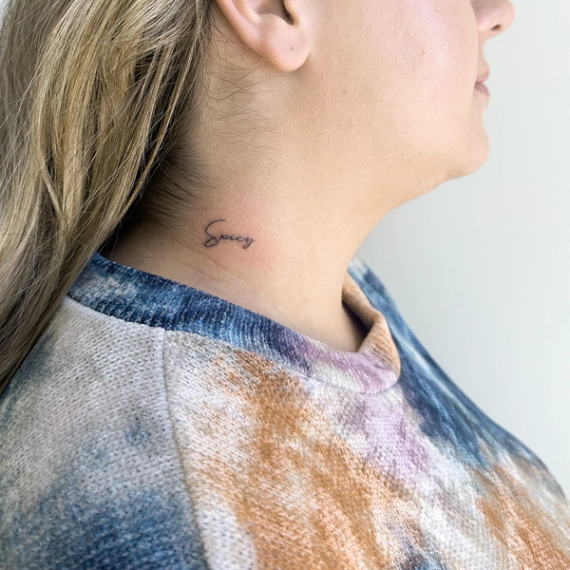

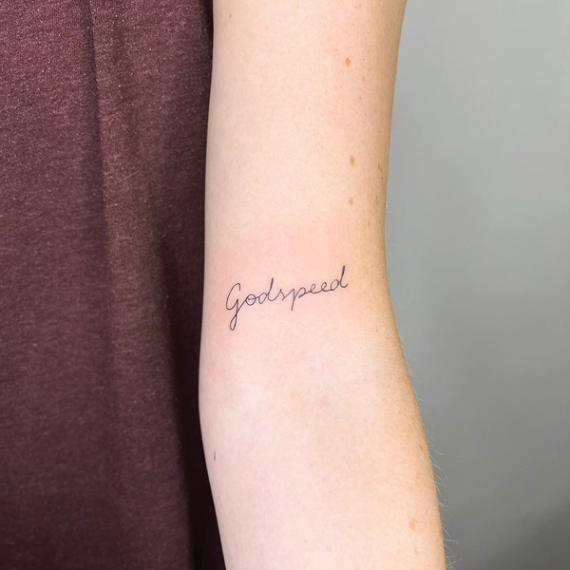
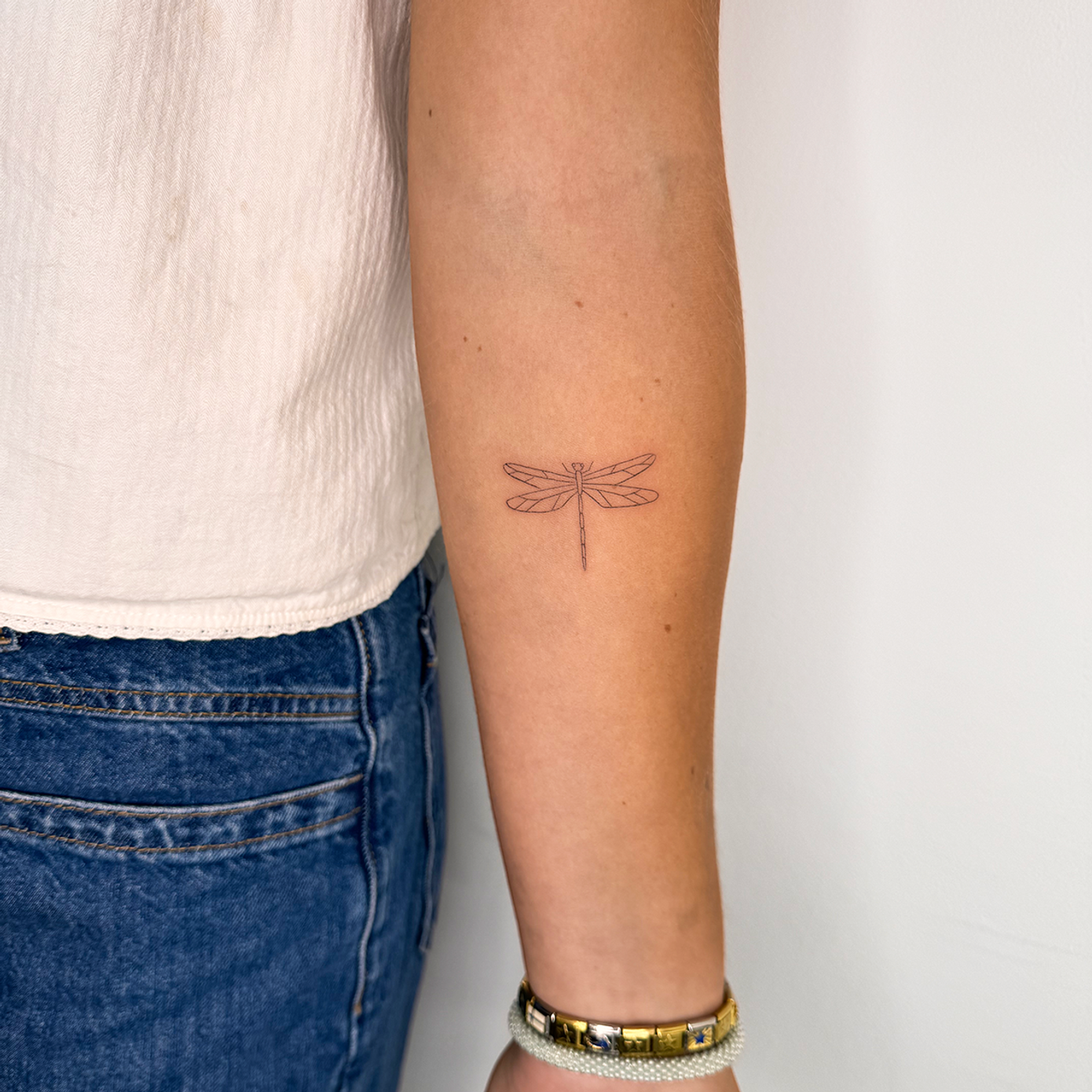
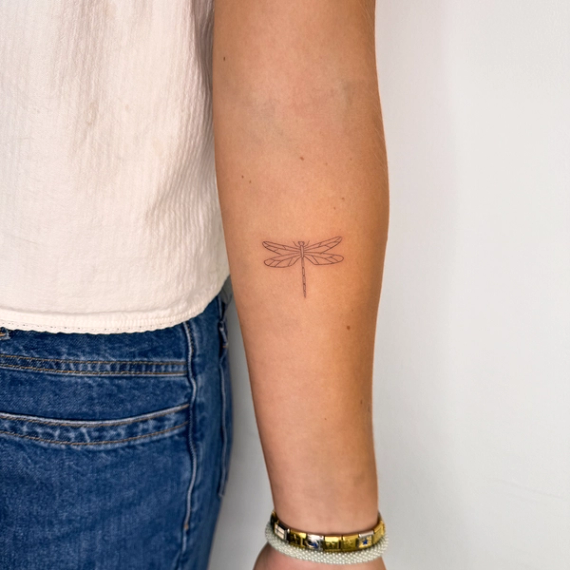
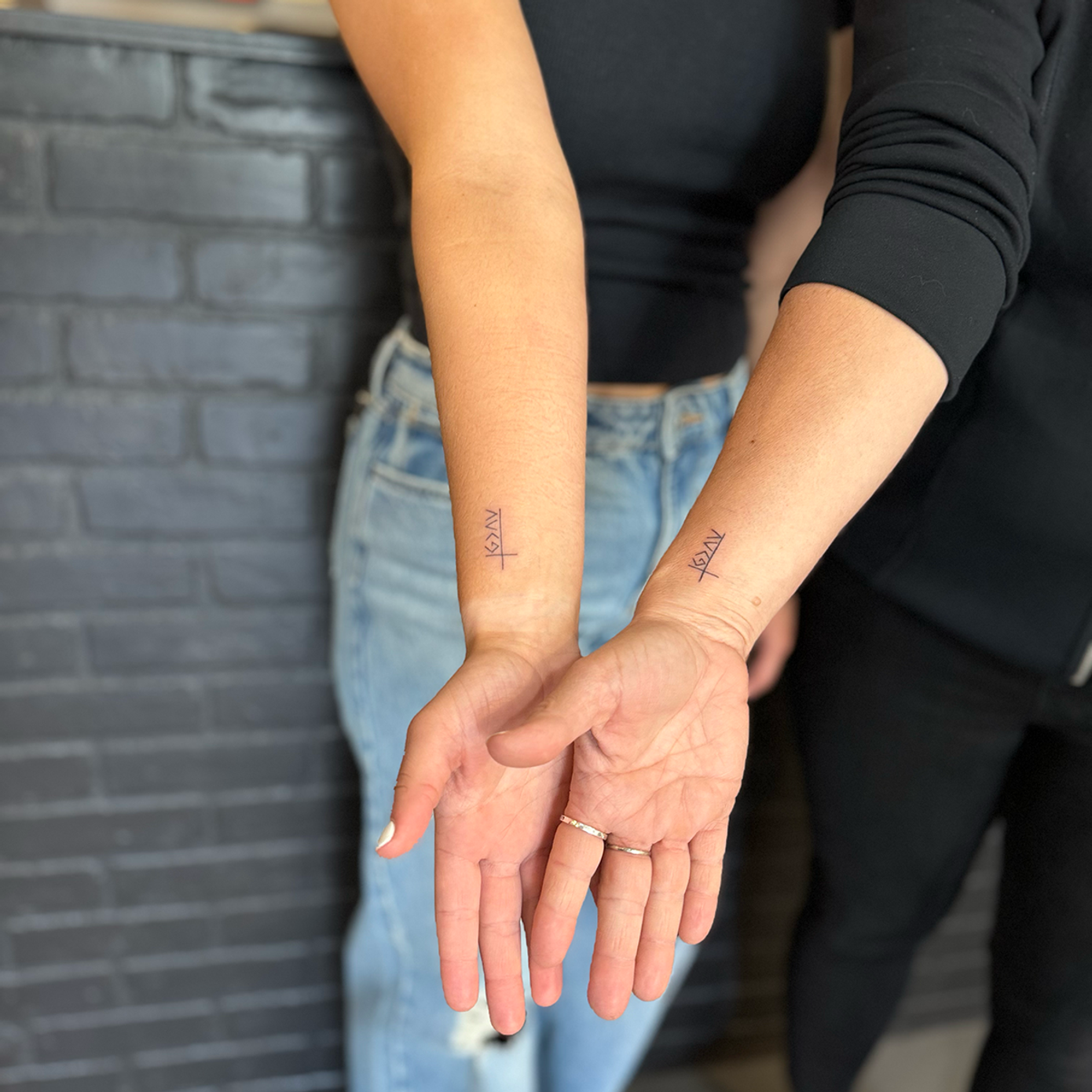
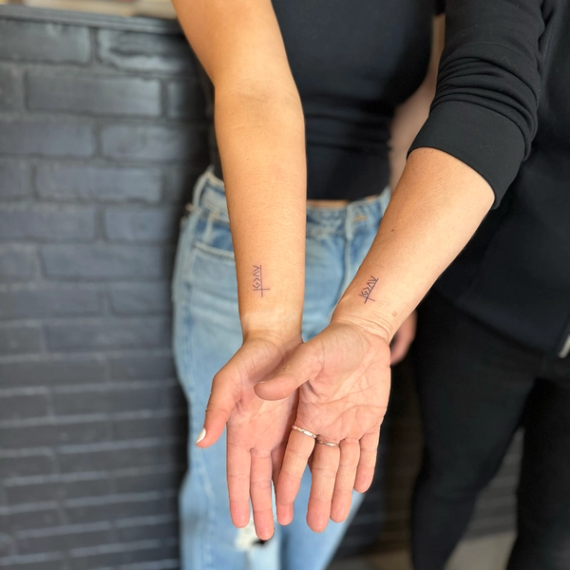

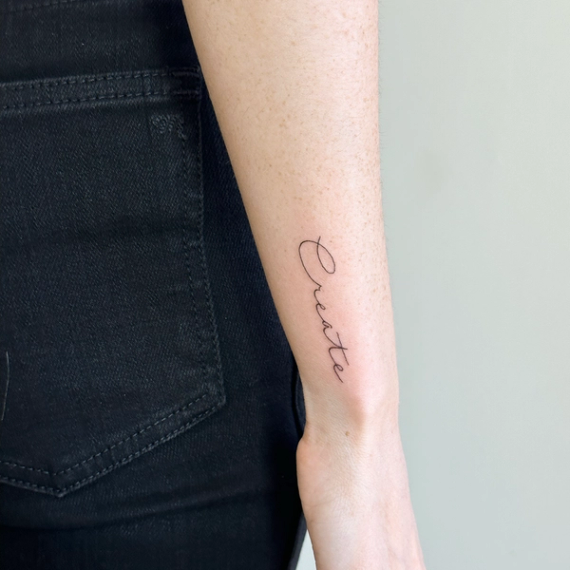
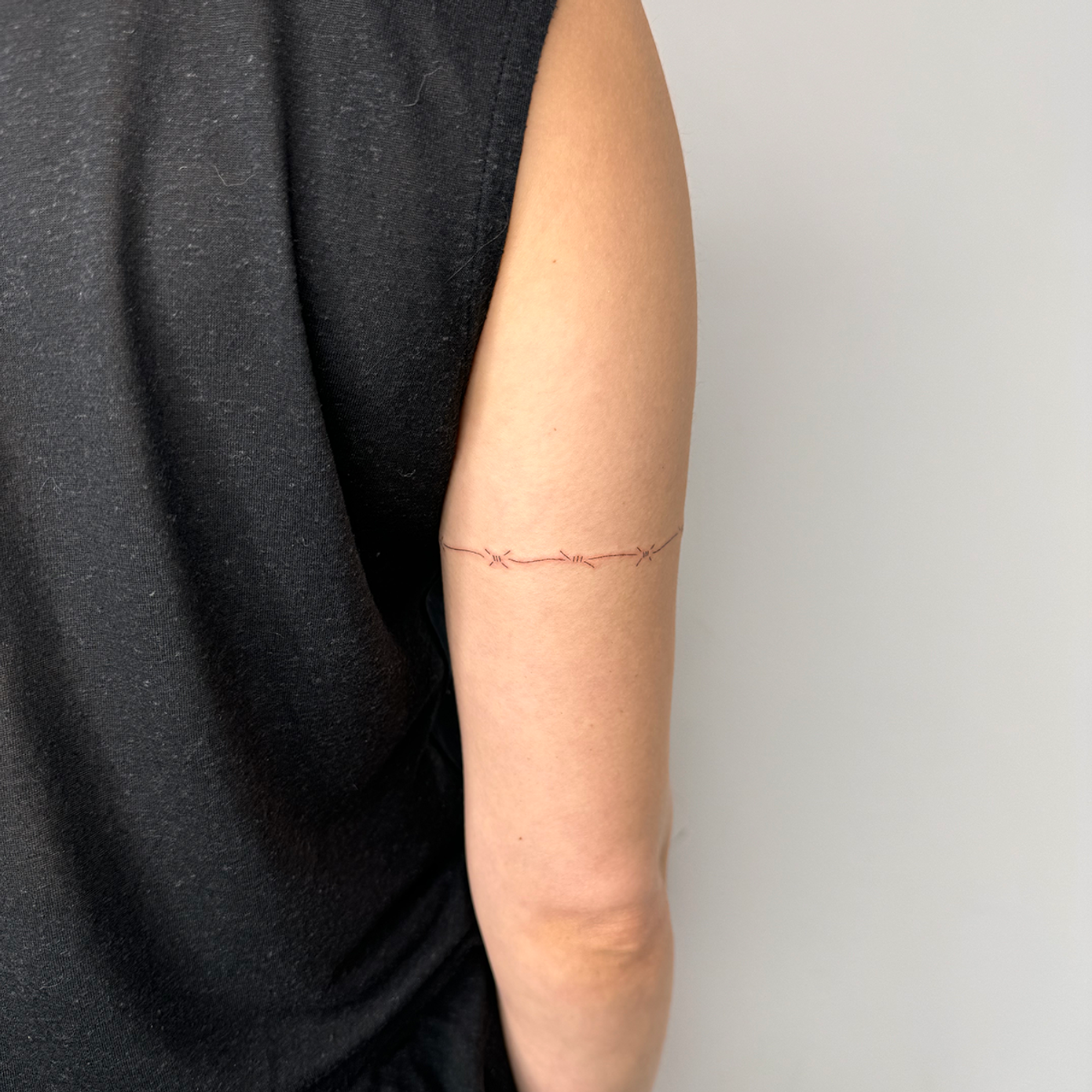
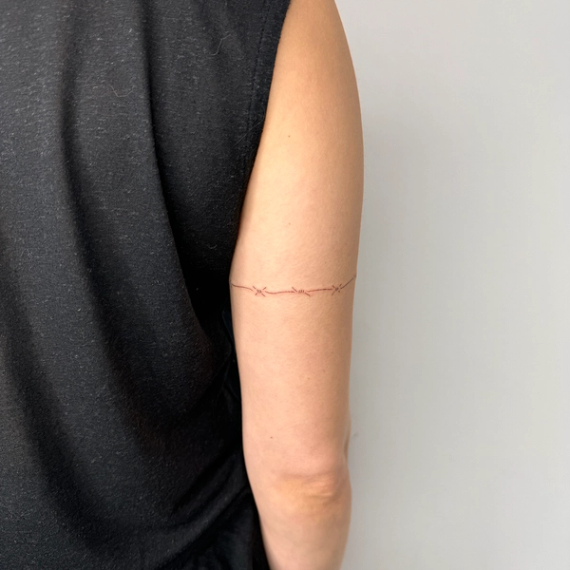
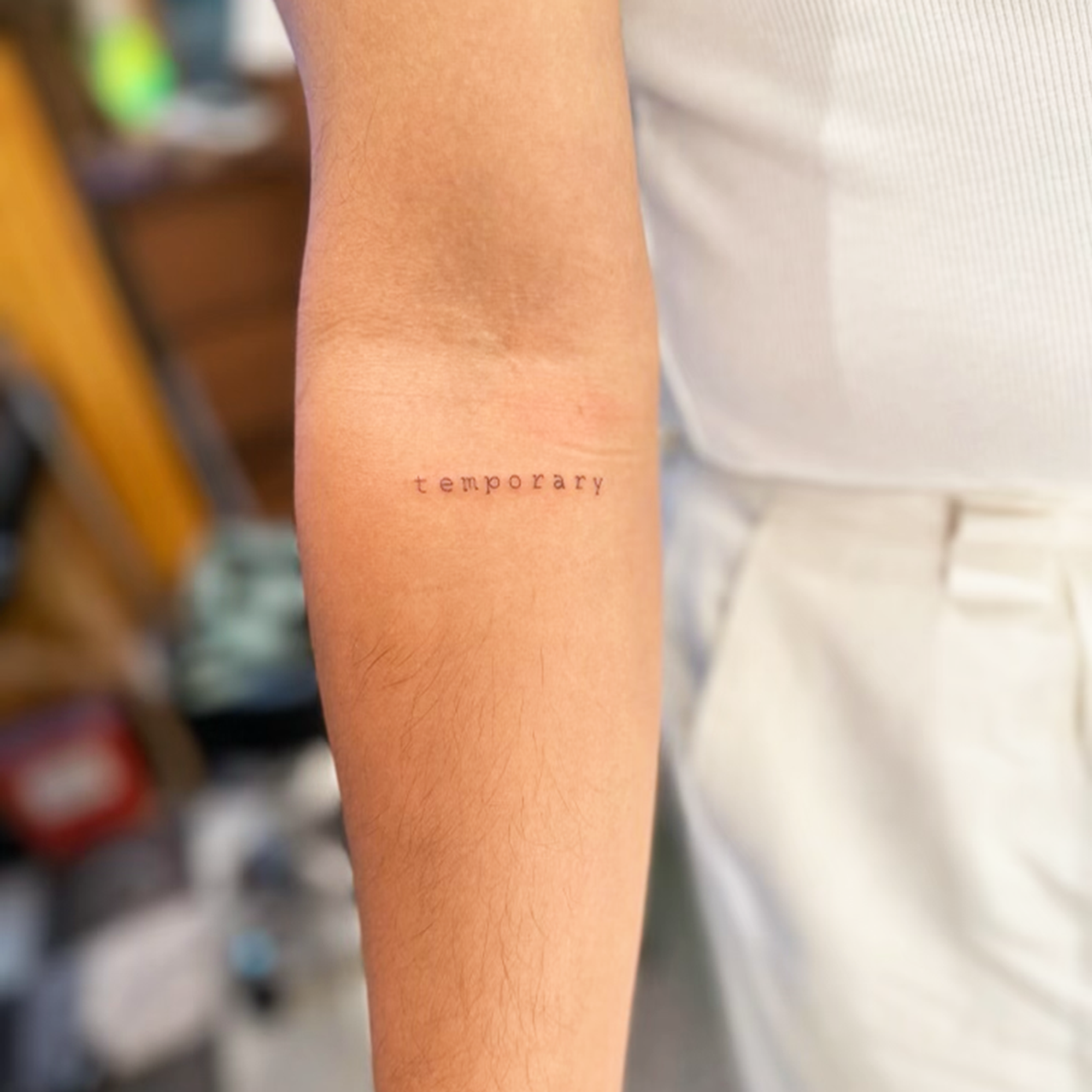
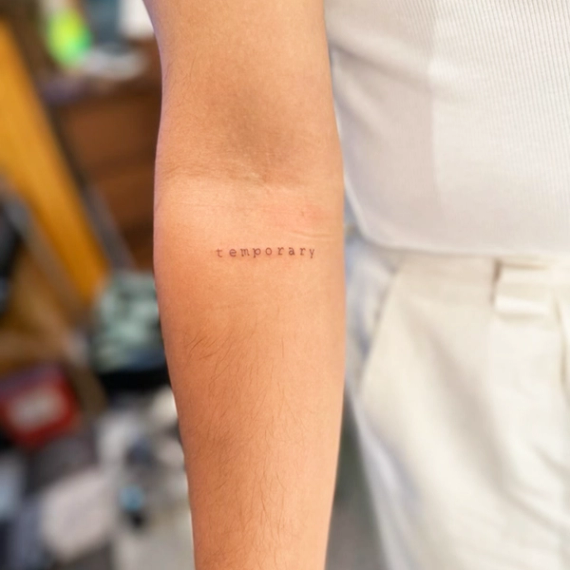
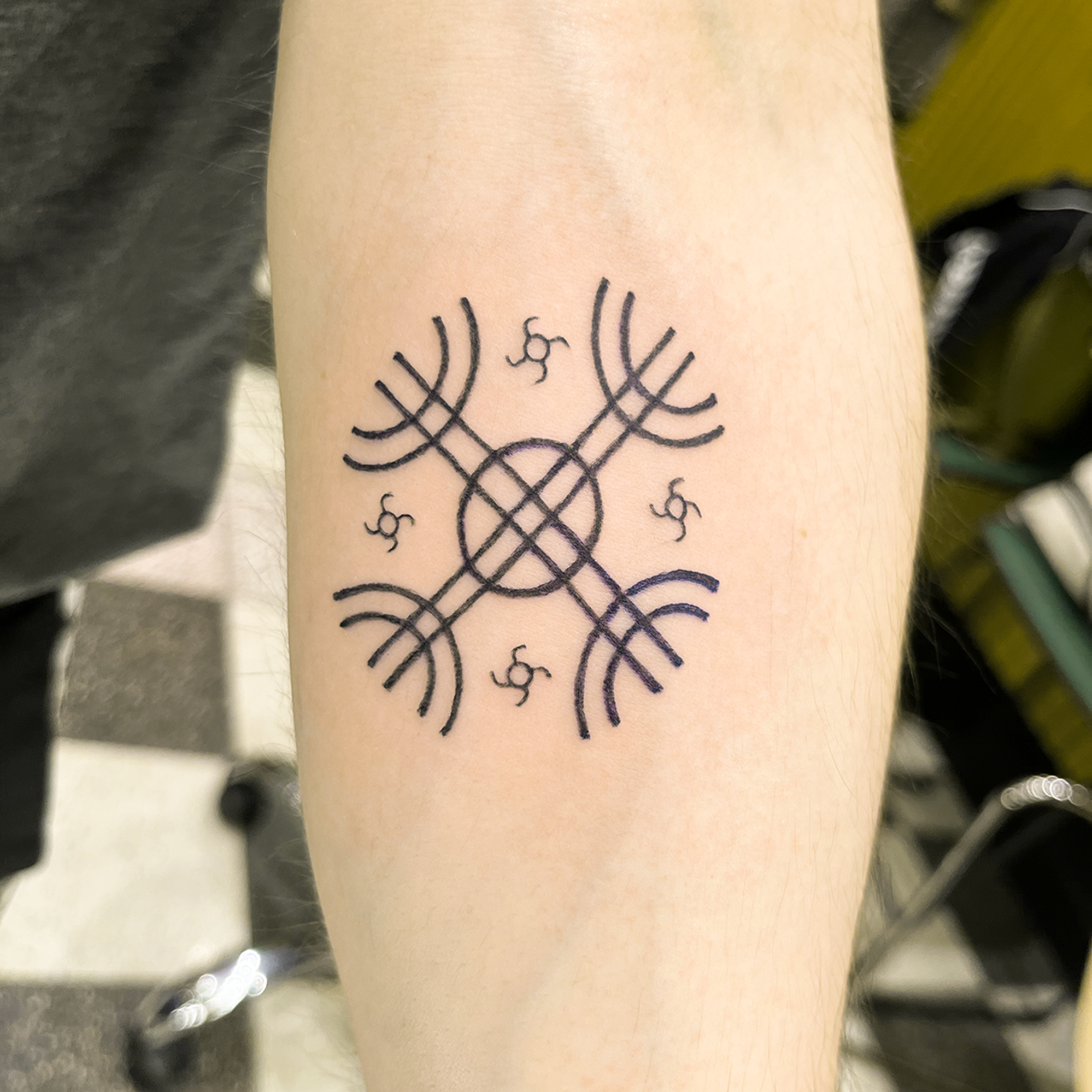


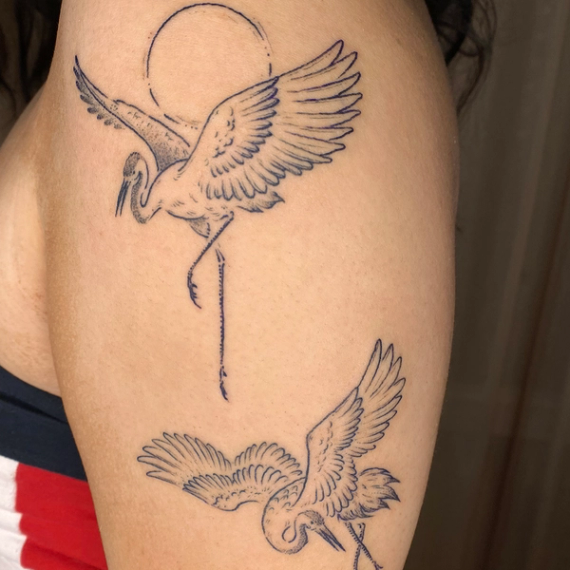
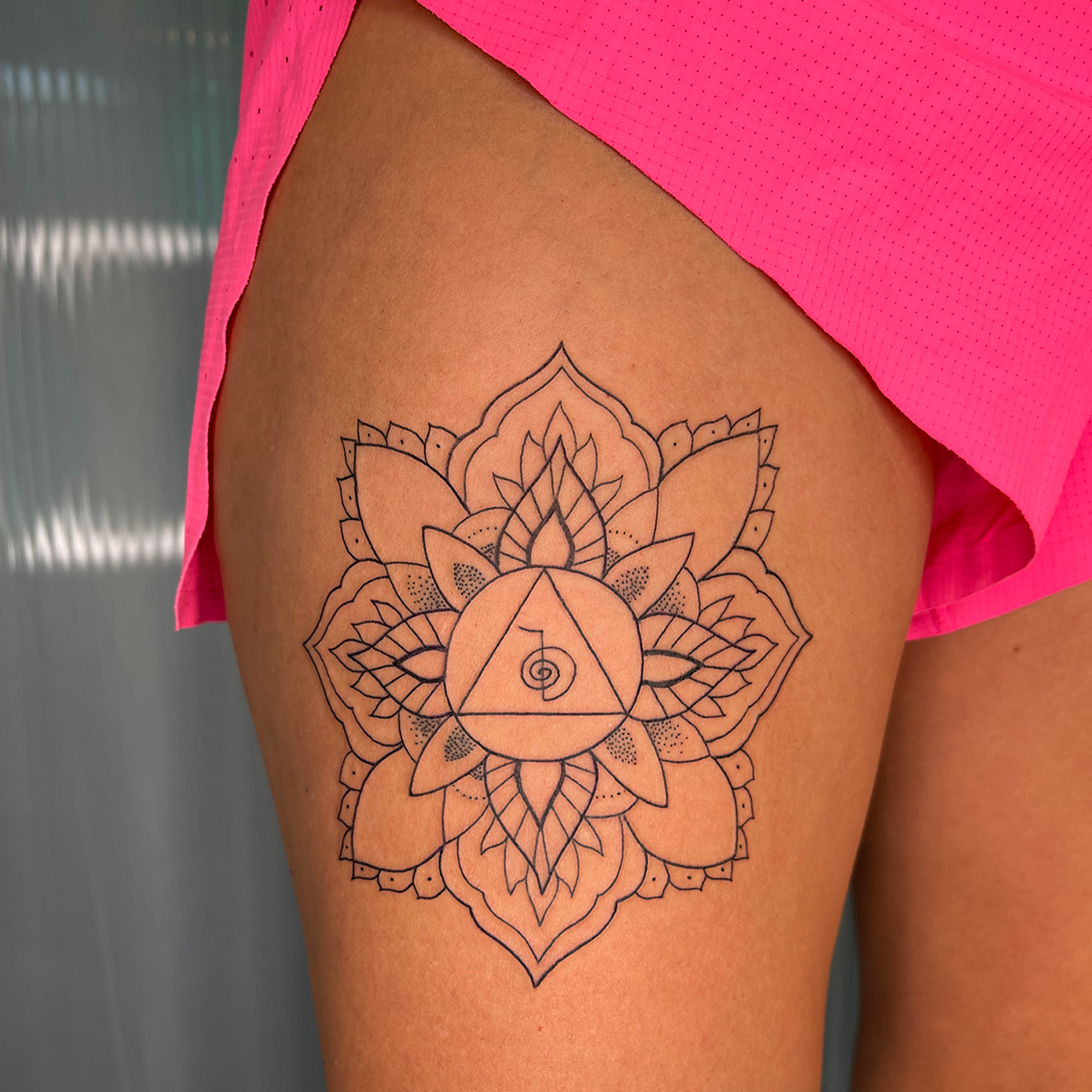
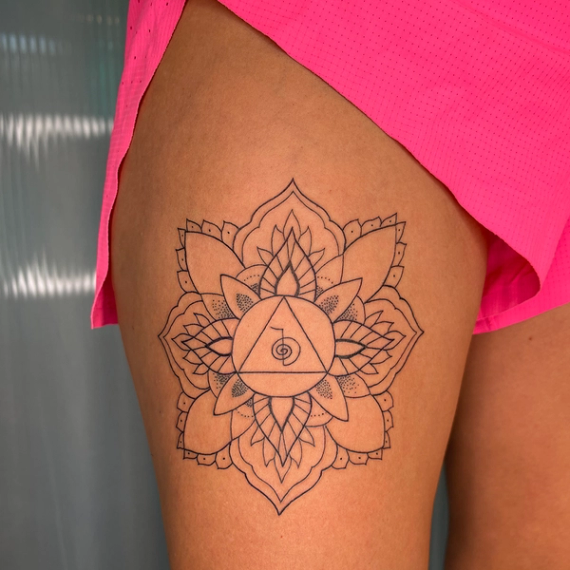
%402x.png?w=1390&auto=format)
%402x.png?w=570&auto=format)

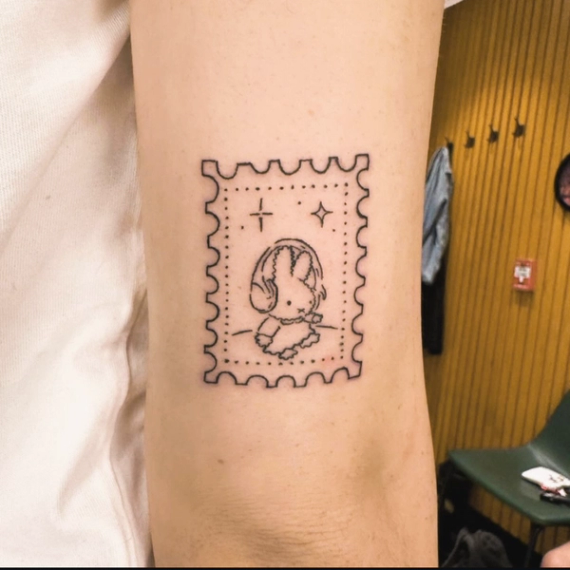


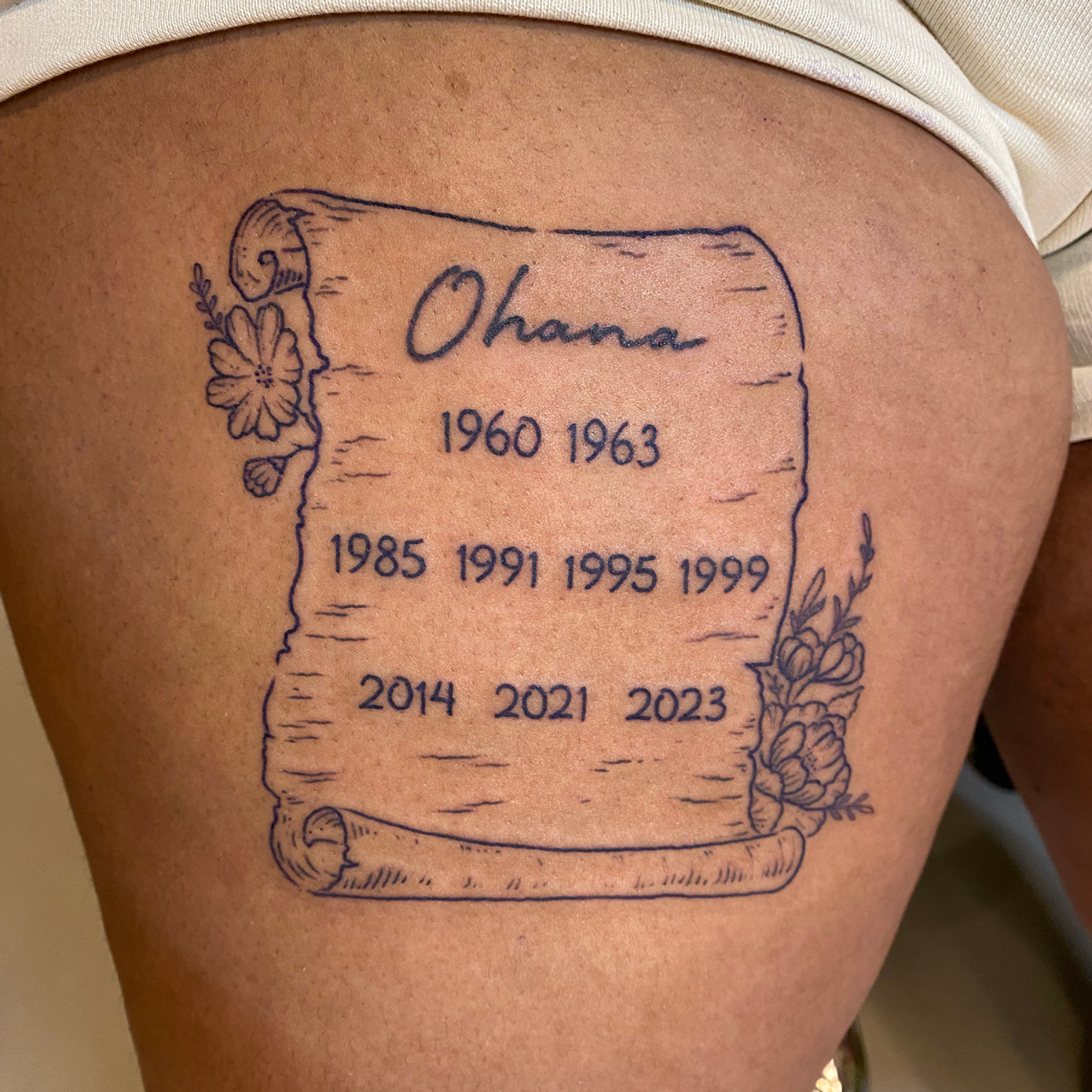
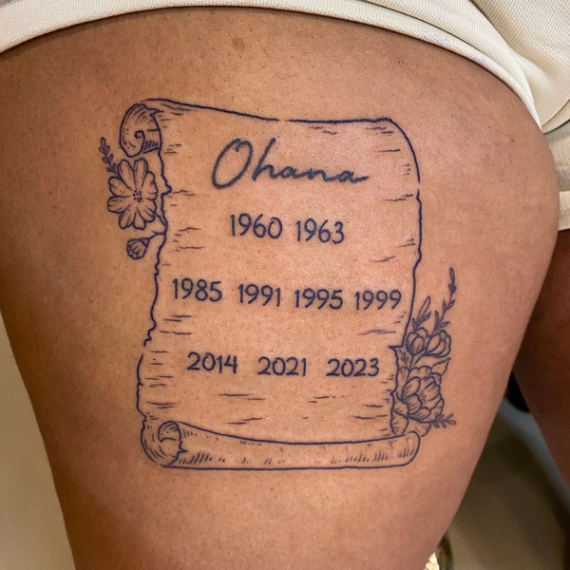
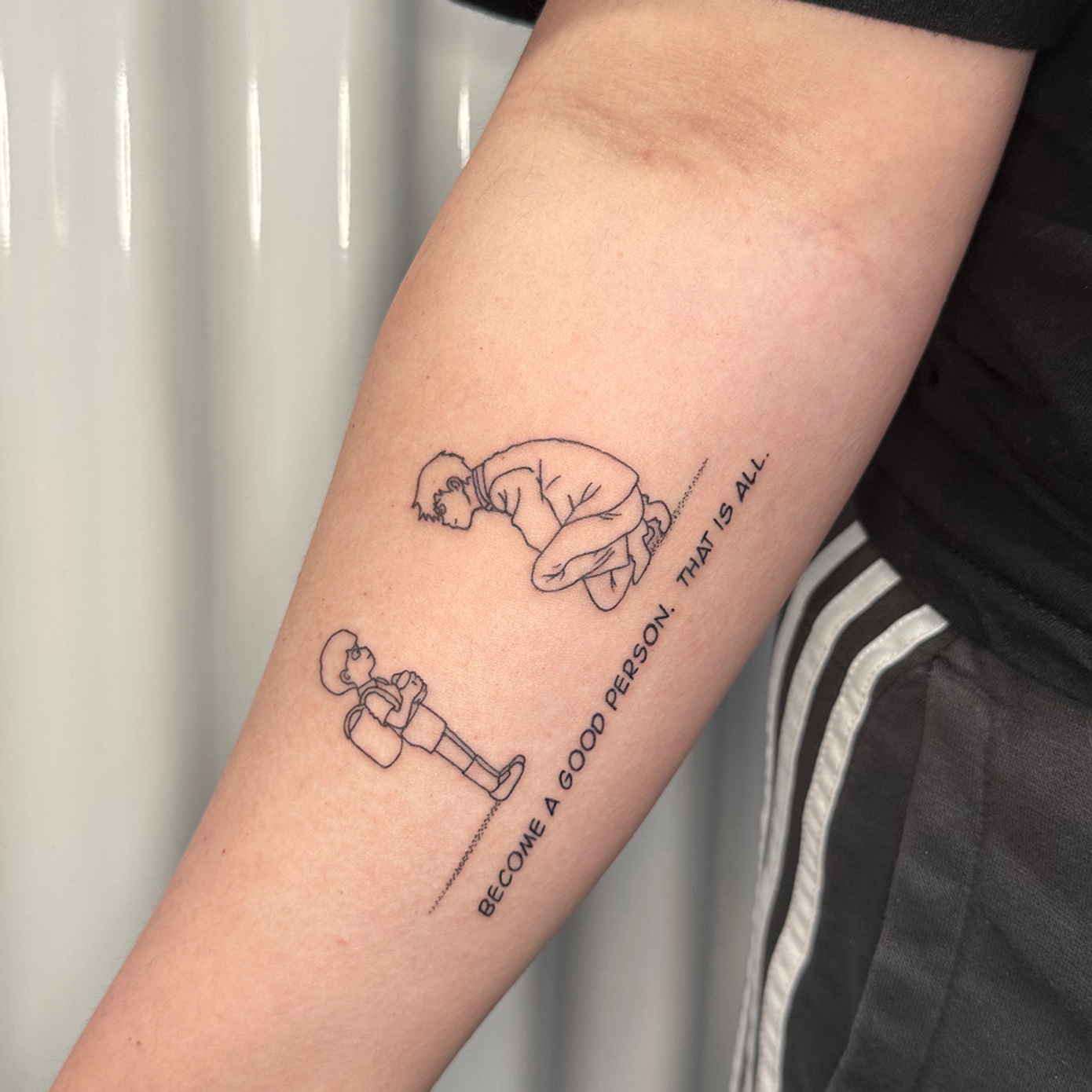
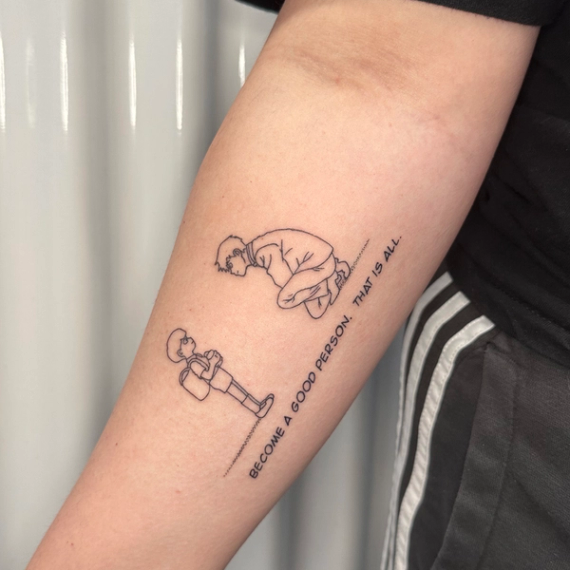
Cómo utilizar la tinta Ephemeral, según los artistas
La tinta Ephemeral marca el último avance en la innovación del tatuaje, tras la evolución de las agujas manuales a las máquinas eléctricas y rotativas, y de los estilos tradicionales al hiperrealismo y la línea fina.
Como con cualquier herramienta, dominar la tinta Ephemeral requiere práctica. La calidad del arte sigue dependiendo del usuario, por lo que animamos a los artistas a seguir aprendiendo y mejorando sus habilidades.
Para ayudar a nuestra comunidad de artistas a crecer, aquí compartimos ideas clave de nuestros socios sobre lo que funciona y lo que no.
| IMPORTANCIA DE PRIORIZAR LA PIEL | Dado que los tatuajes diseñados para desvanecerse, bueno… se desvanecen, el cuidado de la piel influye en su apariencia una vez que el tatuaje desaparece. Los tatuajes permanentes pueden enmascarar el daño de la piel. Por esta razón, los artistas que usan tinta Ephemeral han dejado de lado ciertas técnicas que podrían dañar la piel. |
| TÉCNICAS QUE FUNCIONAN MEJOR | Para lograr un buen sombreado, prueba el punteado (punto por punto) o el rayado. La transferencia es más fácil y el riesgo de sobrecargar la piel se reduce al estirar la piel y ajustar tanto la velocidad de la mano como la configuración de la máquina. |
| TÉCNICAS QUE RESULTAN DESAFIANTES | El sobretrabajo de la piel es probable al pasar repetidamente sobre líneas saturadas, sobrecargar puntillismo o líneas, hacer sombreado cruzado o rellenos sólidos. |
| TRANSFERENCIA DE TINTA | A veces se compara la transferencia de tinta con la tinta blanca. |
| SENSACIÓN DE LA TINTA | Se describe como ligera y comparable a la tinta de lavado gris. |
| UBICACIONES | Al igual que con la tinta permanente, la dificultad varía según la parte del cuerpo. No se recomienda aplicar en la cara, cabeza o zona genital. |
| AGRUPACIONES DE AGUJAS | La opinión general de los artistas es que funcionan bien los delineadores de 3 a 13 puntas, y a medida que los artistas ganan experiencia usando la tinta, pueden funcionar incluso agrupaciones de agujas más pequeñas. |
| CUIDADO POSTERIOR | CUIDADO POSTERIOR Los mejores resultados de curación se logran con parches hidrocoloides. En caso de apuro, el plástico adhesivo o productos como SecondSkin son adecuados. La curación al aire libre no es efectiva en los primeros 3 días después del tatuaje y compromete significativamente el resultado. Los mejores productos son jabones y cremas hidratantes sin fragancia. Los tatuajes suelen curarse mejor sin productos a base de petróleo y usando cremas hidratantes no grasosas. |
Para obtener instrucciones más detalladas de cuidado posterior, visita nuestra página de Cuidado y curación.
Factores que influyen en el desvanecimiento: saturación y profundidad de la tinta
Aunque los desvanecimientos de Ephemeral siempre varían en función de la piel, la fisiología y la ubicación elegida, los dos factores más controlables son la saturación y la profundidad de la aguja..





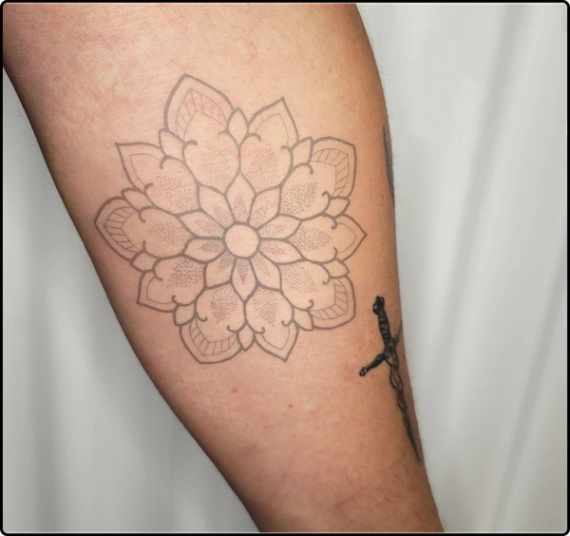


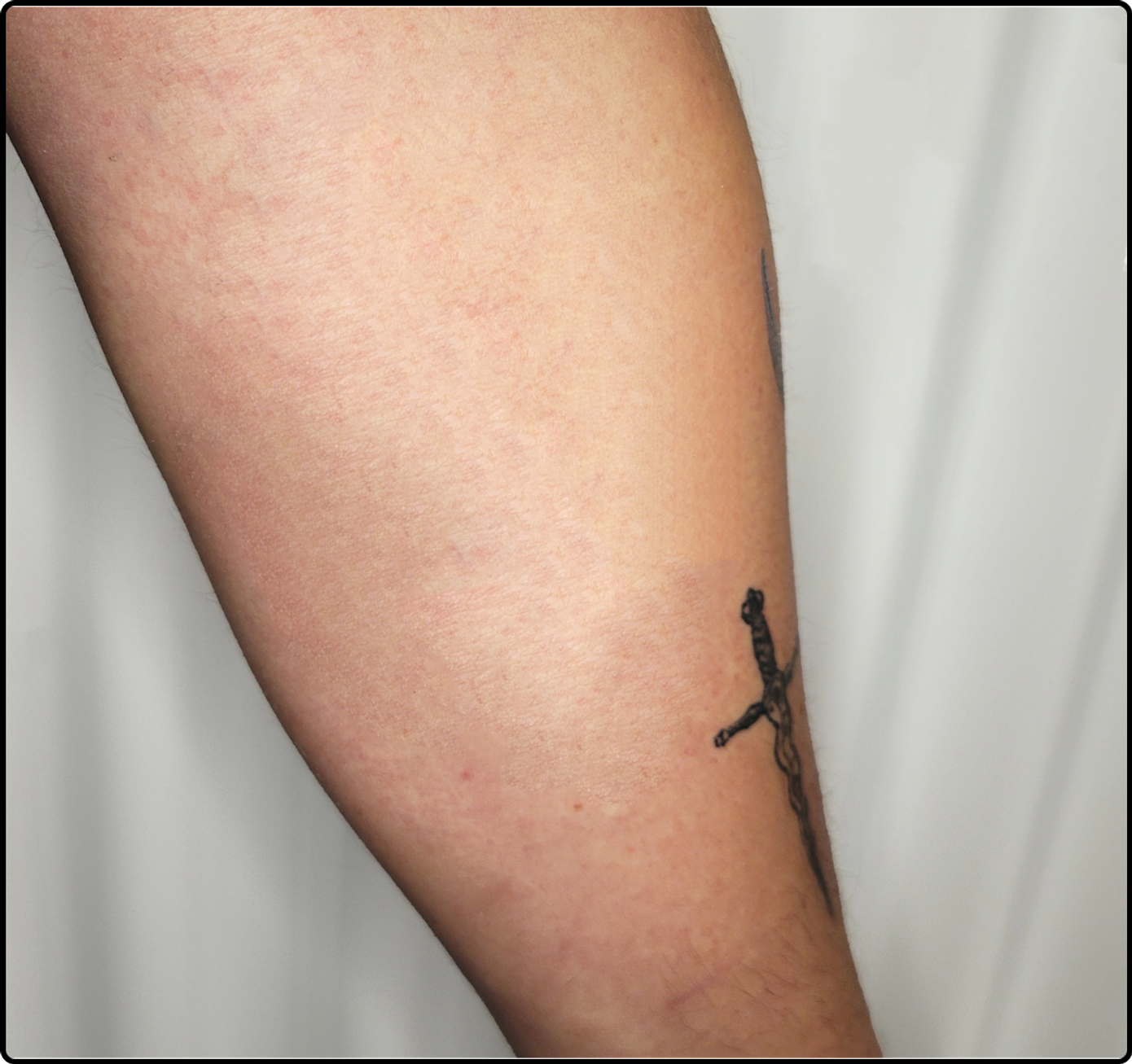

Impacto de la saturación
Cuanta más tinta se deposita en la piel, más tiempo le toma al cuerpo eliminarla. Si el diseño tiene diferentes niveles de saturación de tinta, las líneas oscuras tardarán más en desaparecer que las líneas claras. Observa el ejemplo y verás cómo las líneas oscuras se desvanecen más lentamente que las zonas con punteado ligero.










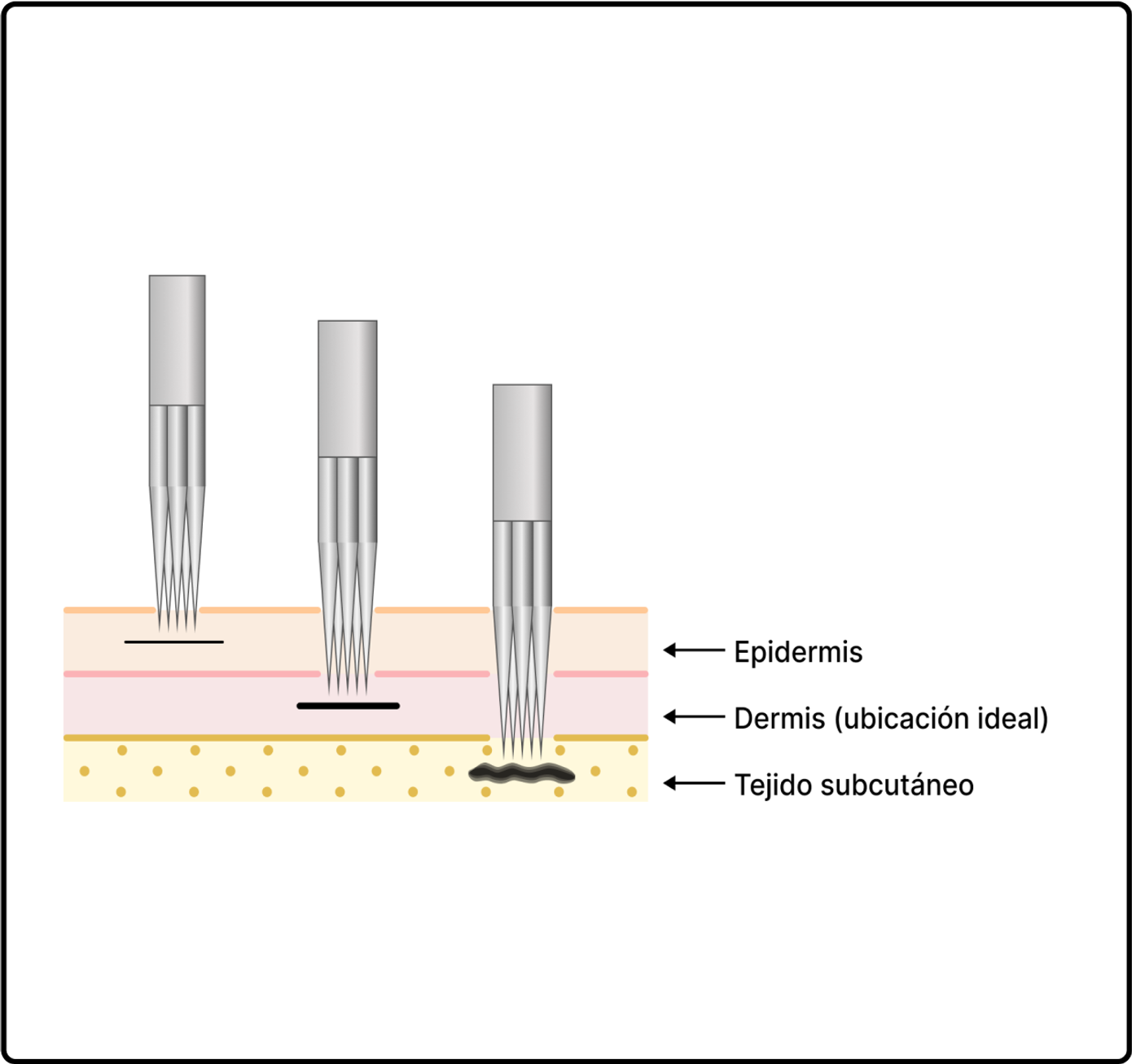
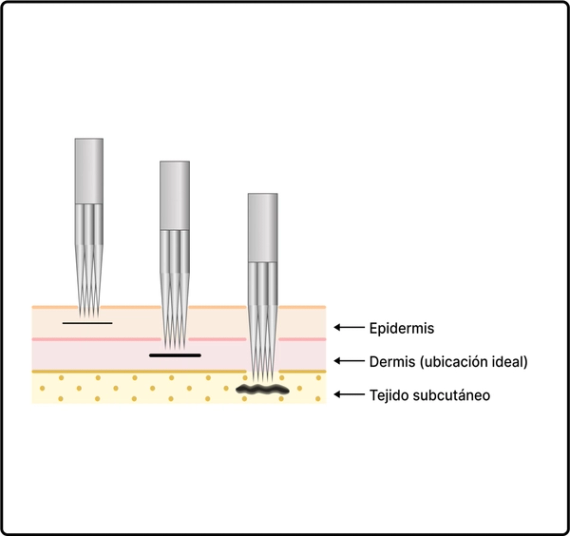
Impacto de la profundidad
Si la tinta se deposita en la capa superior de la piel (la epidermis), se desvanecerá más rápido porque la epidermis se renueva rápidamente; si está demasiado profunda (tejido subcutáneo), se desvanecerá más lentamente porque hay menos agua para descomponer la tinta. La profundidad ideal es la dermis.
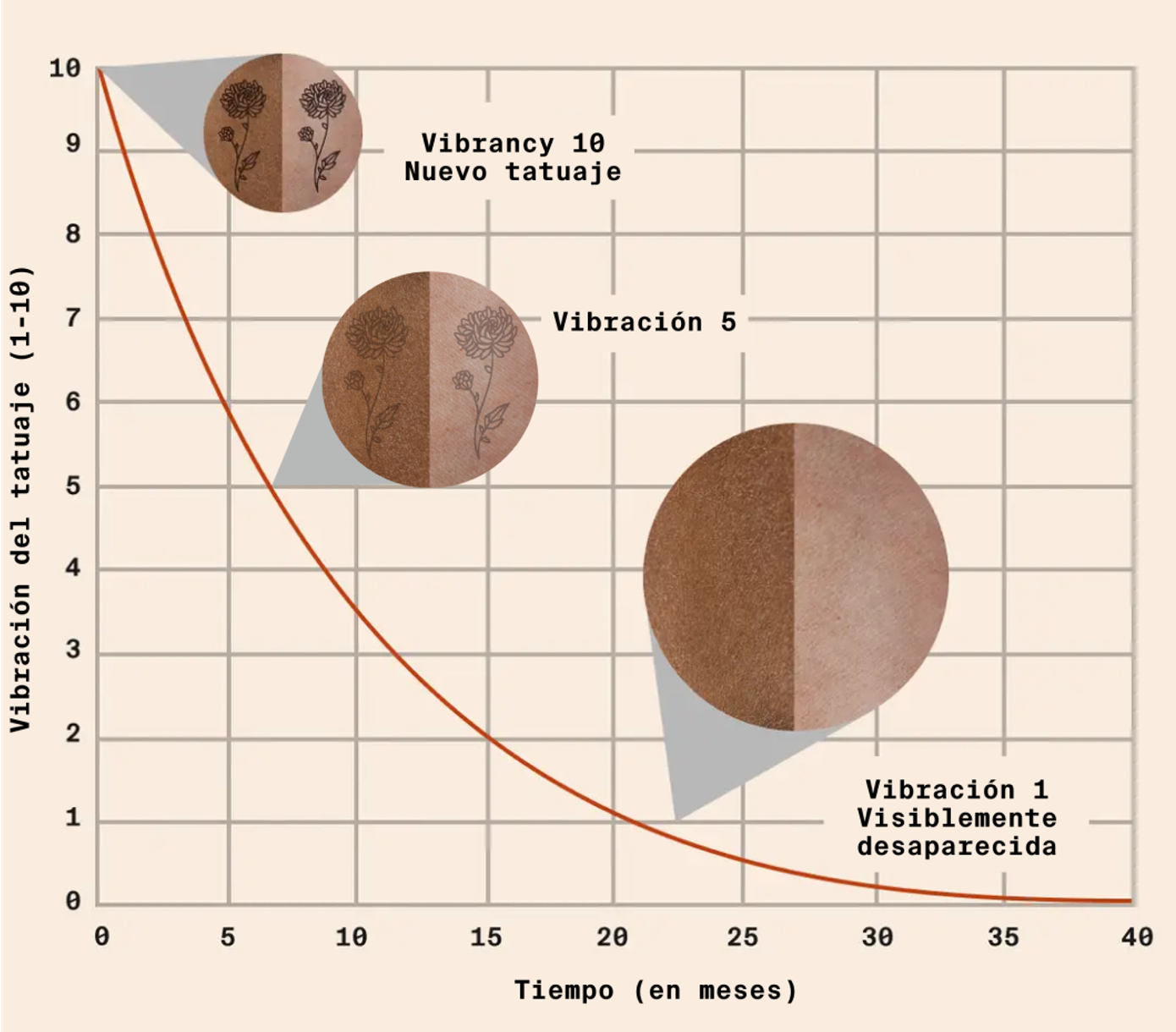
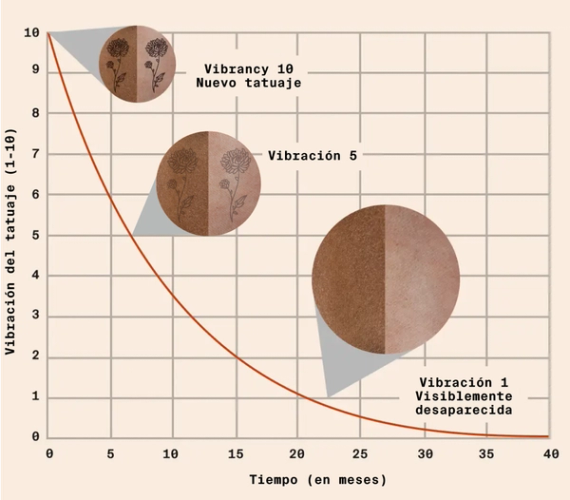
Promedios de desvanecimiento
Después de que tu tatuaje sane, disfruta de tu nueva obra de arte en su máxima intensidad. Suponiendo que la tinta Ephemeral esté en la dermis, este gráfico refleja cómo suele ser el tiempo promedio de desvanecimiento.
Nuestra formulación más reciente ha reducido mucho la variabilidad en el desvanecimiento.
Ahora, el 8 % de los clientes pueden esperar que su tatuaje se desvanezca en el primer año, el 76 % en dos años y el 98 % en tres años.


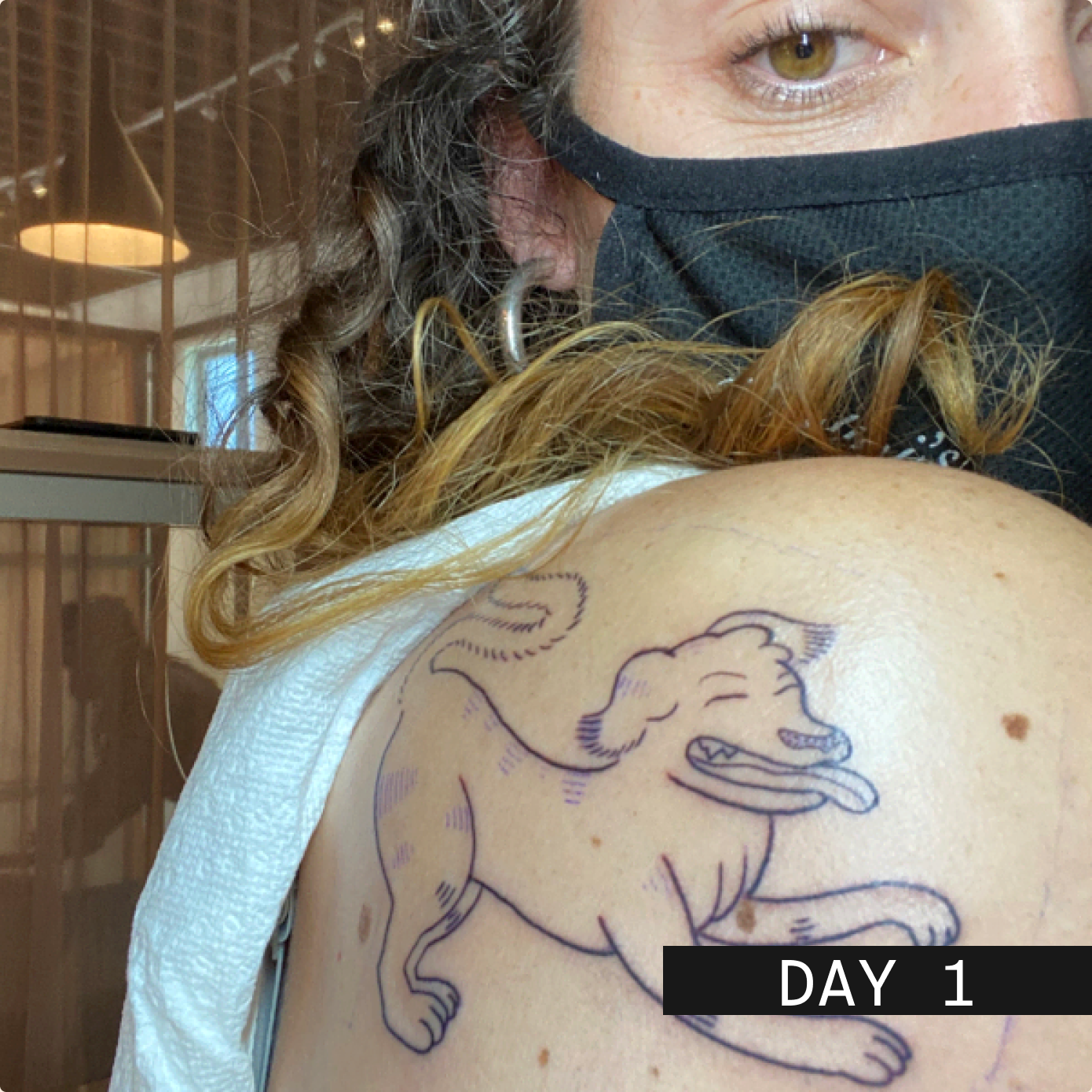
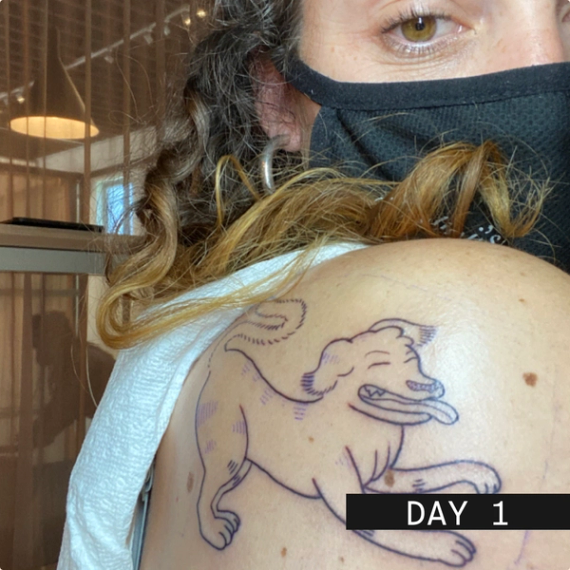

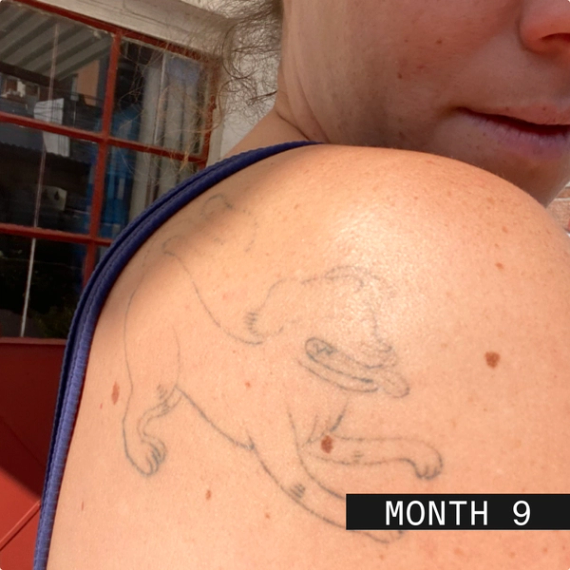
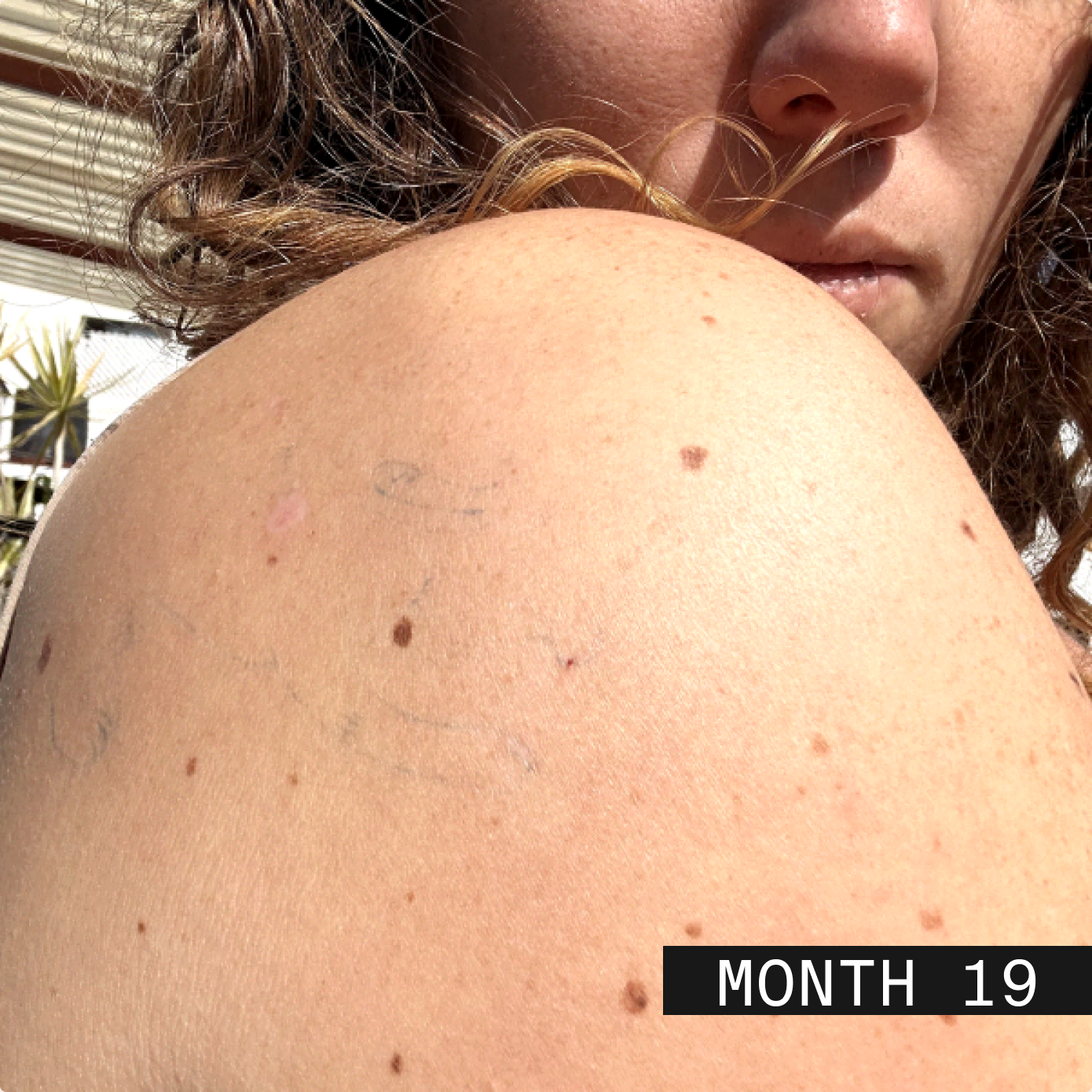
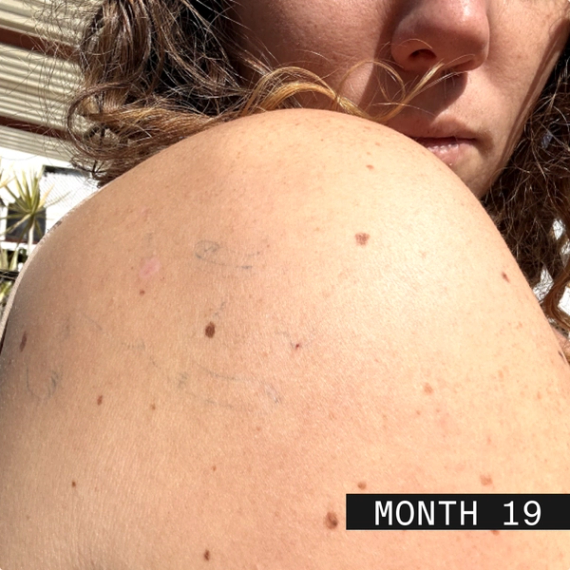



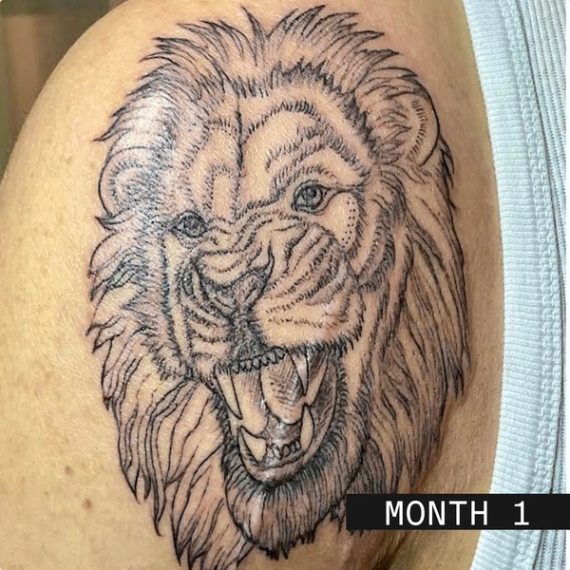
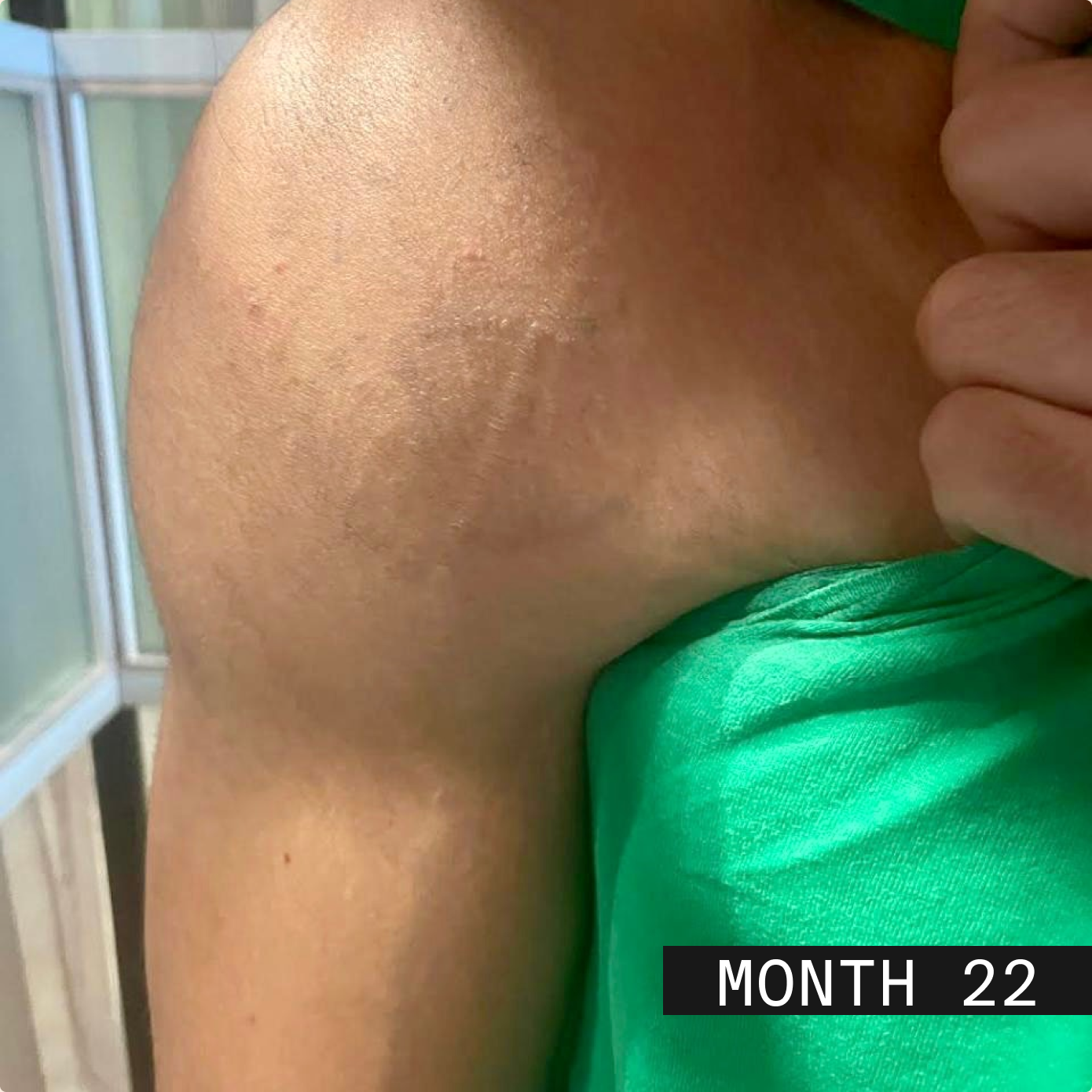
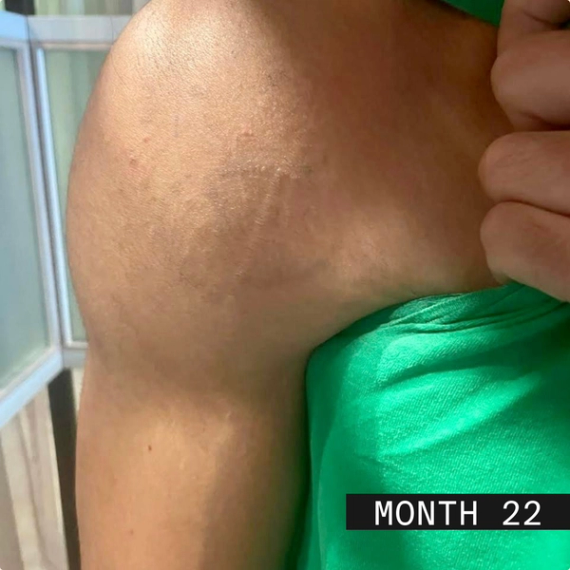
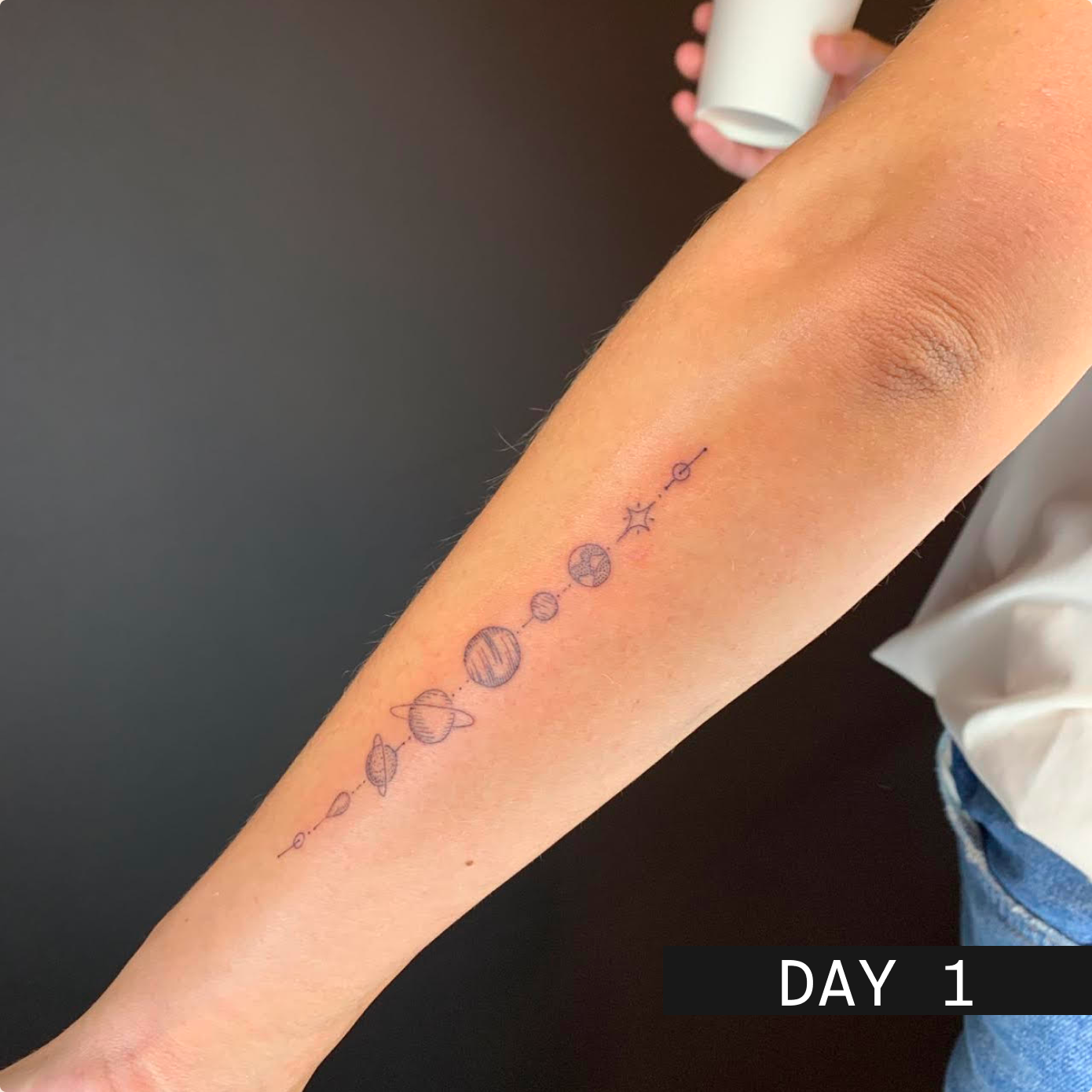

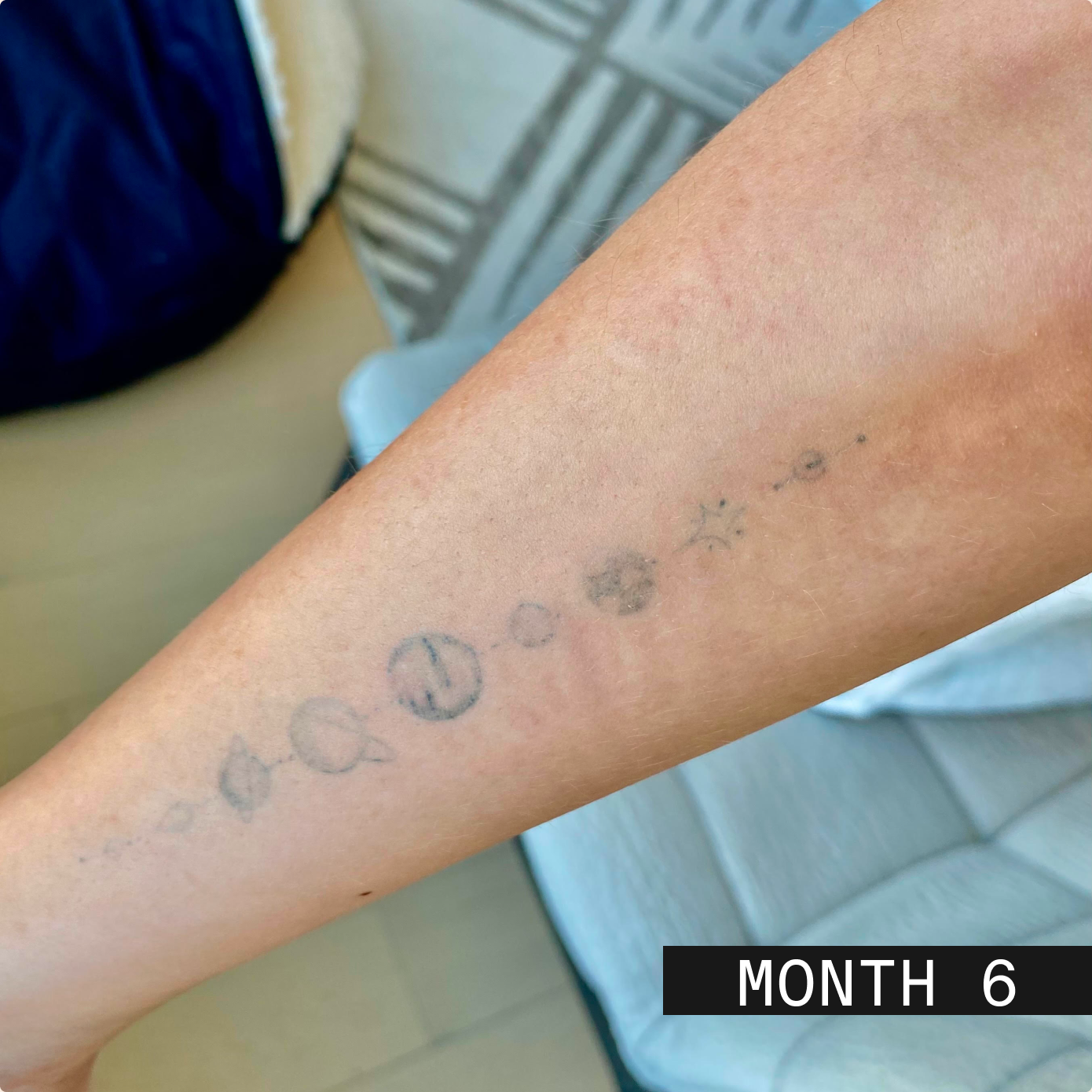
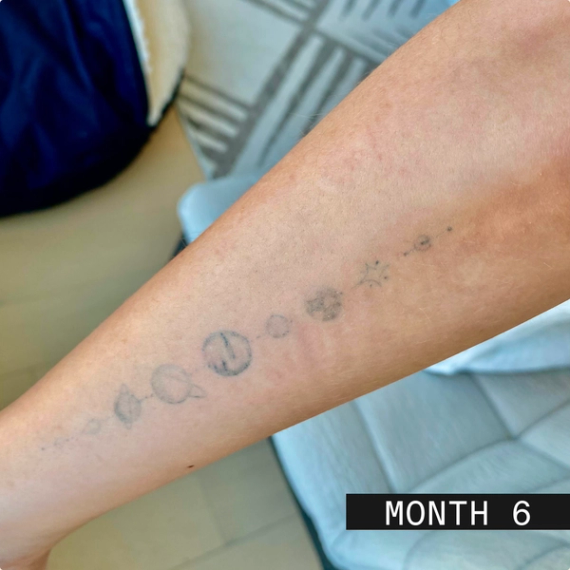
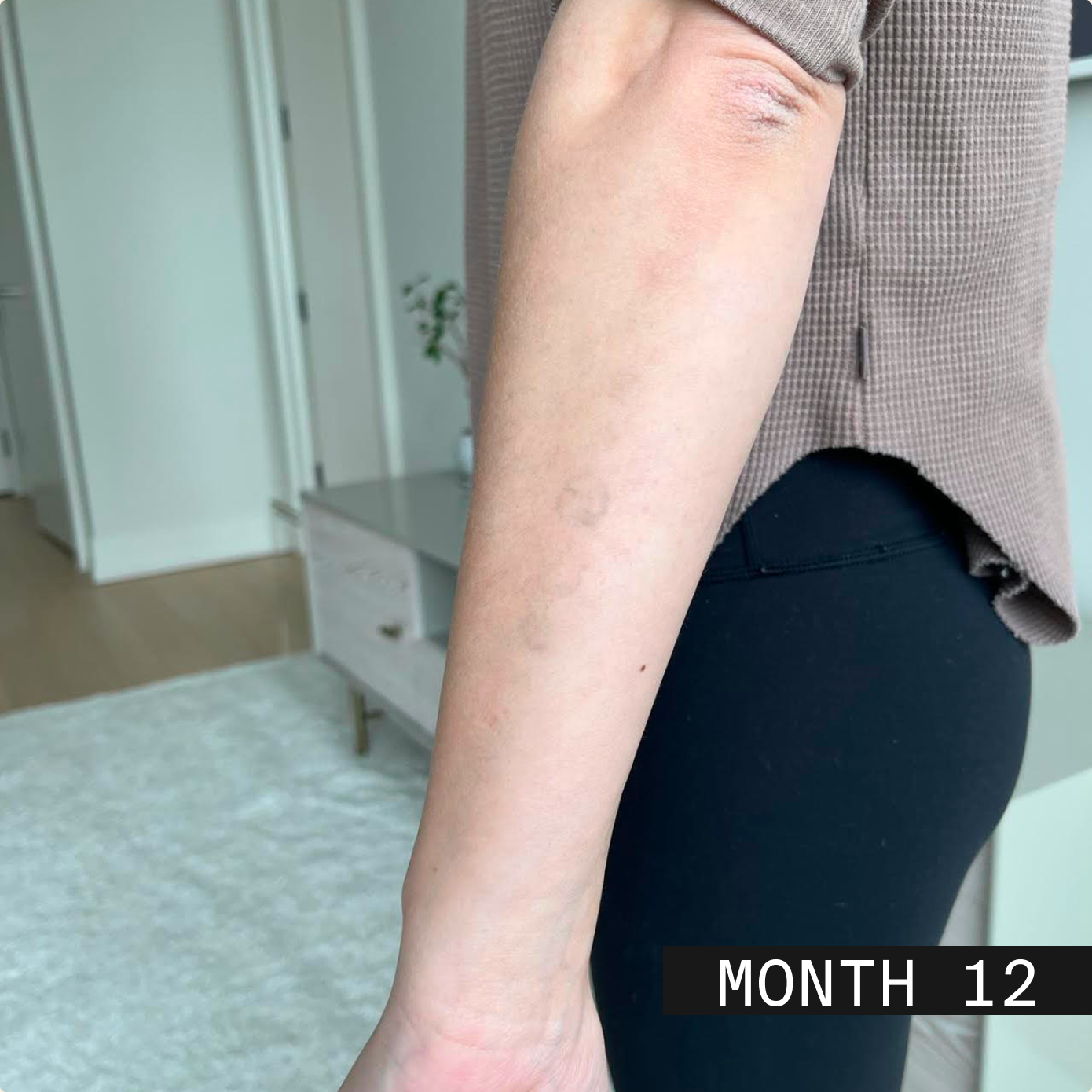
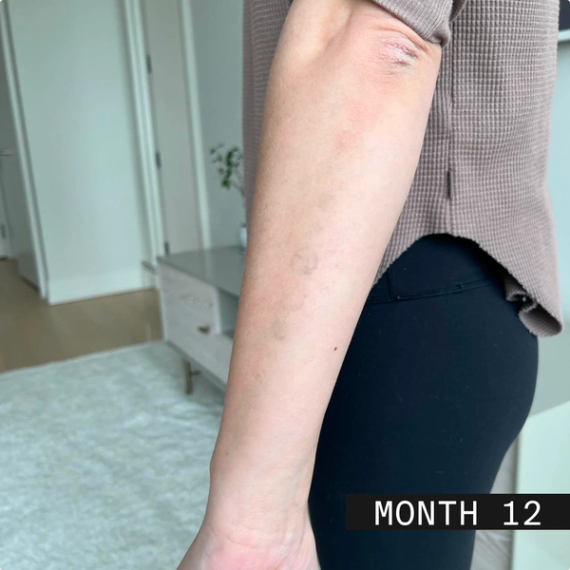
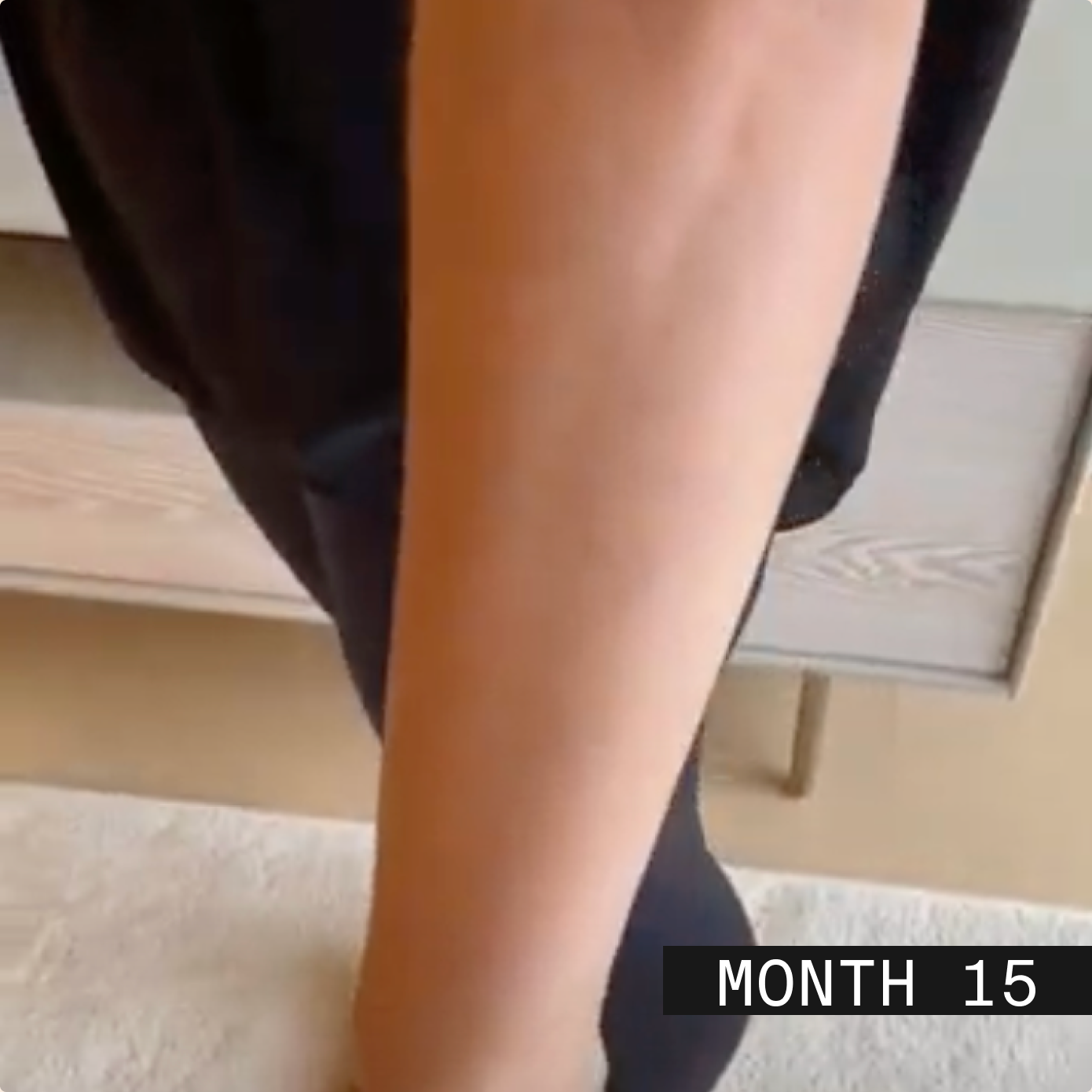
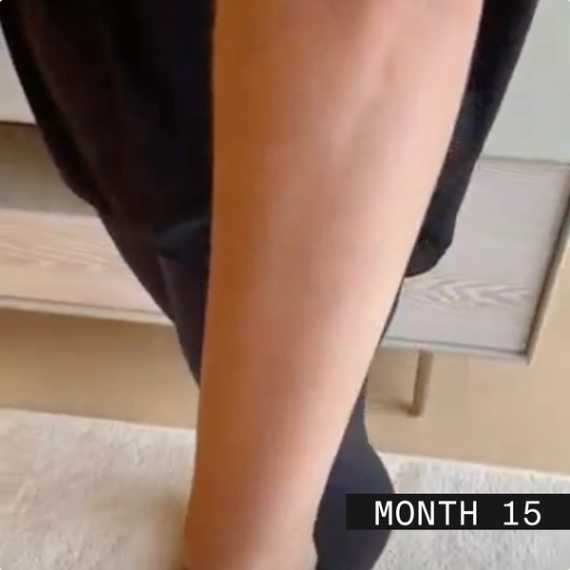
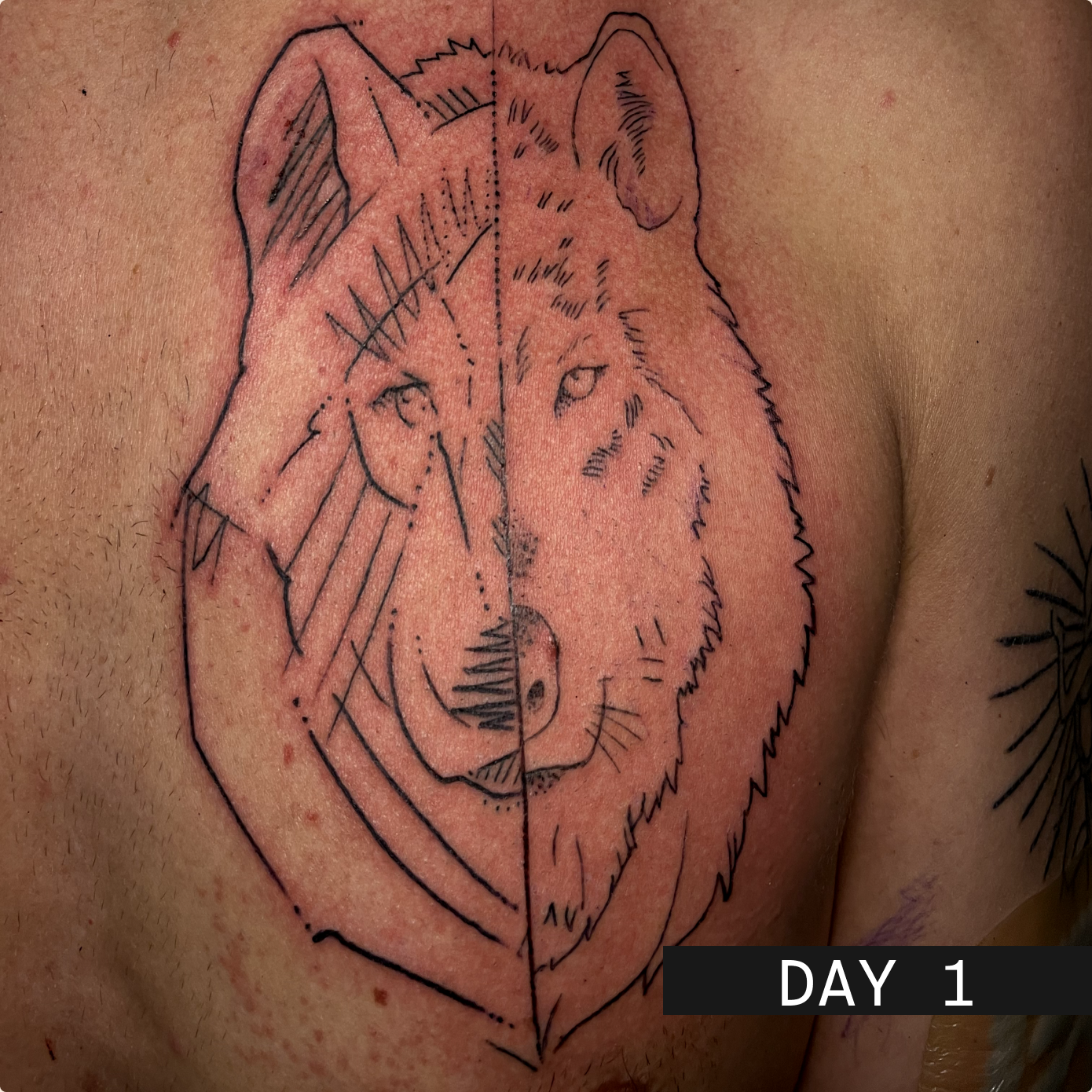

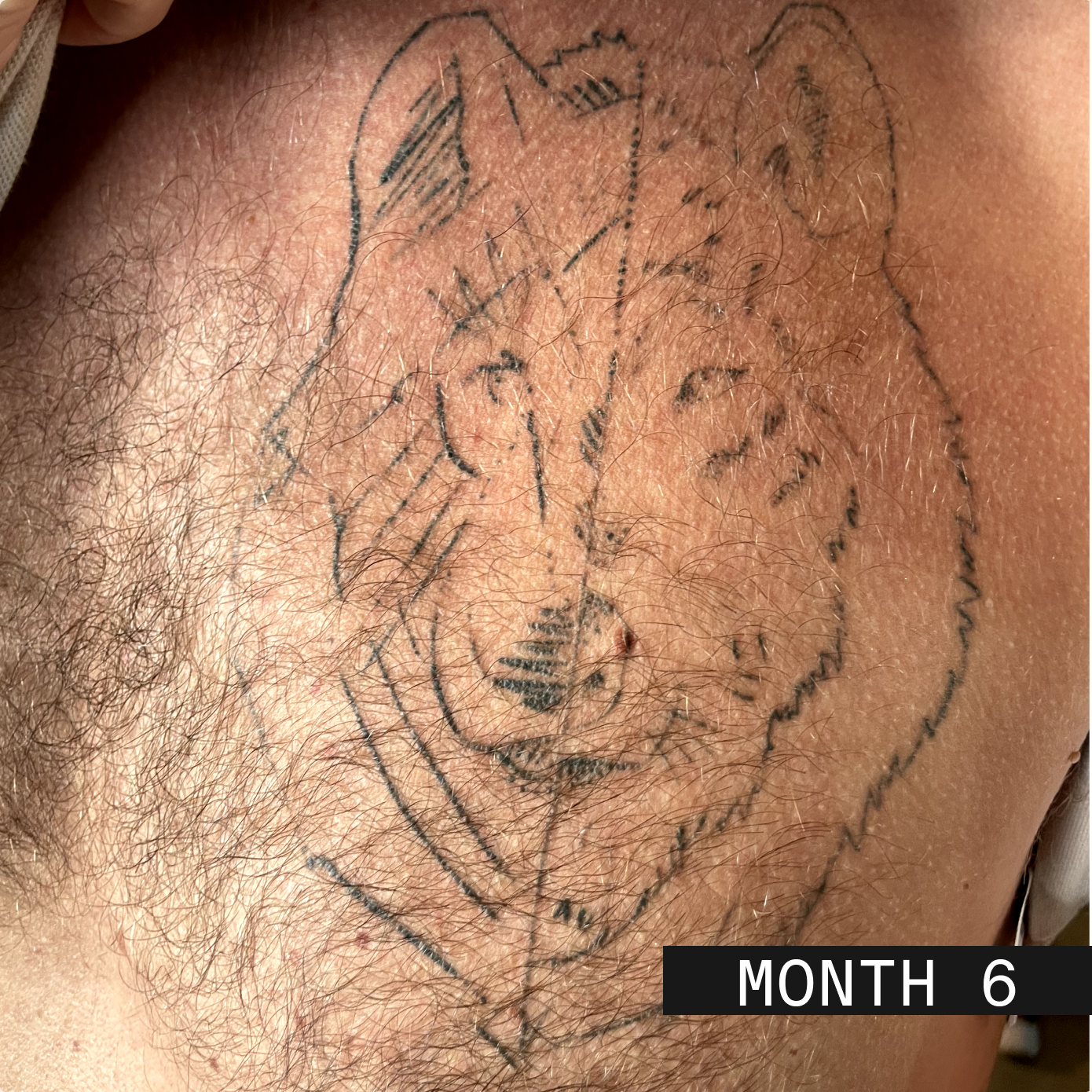

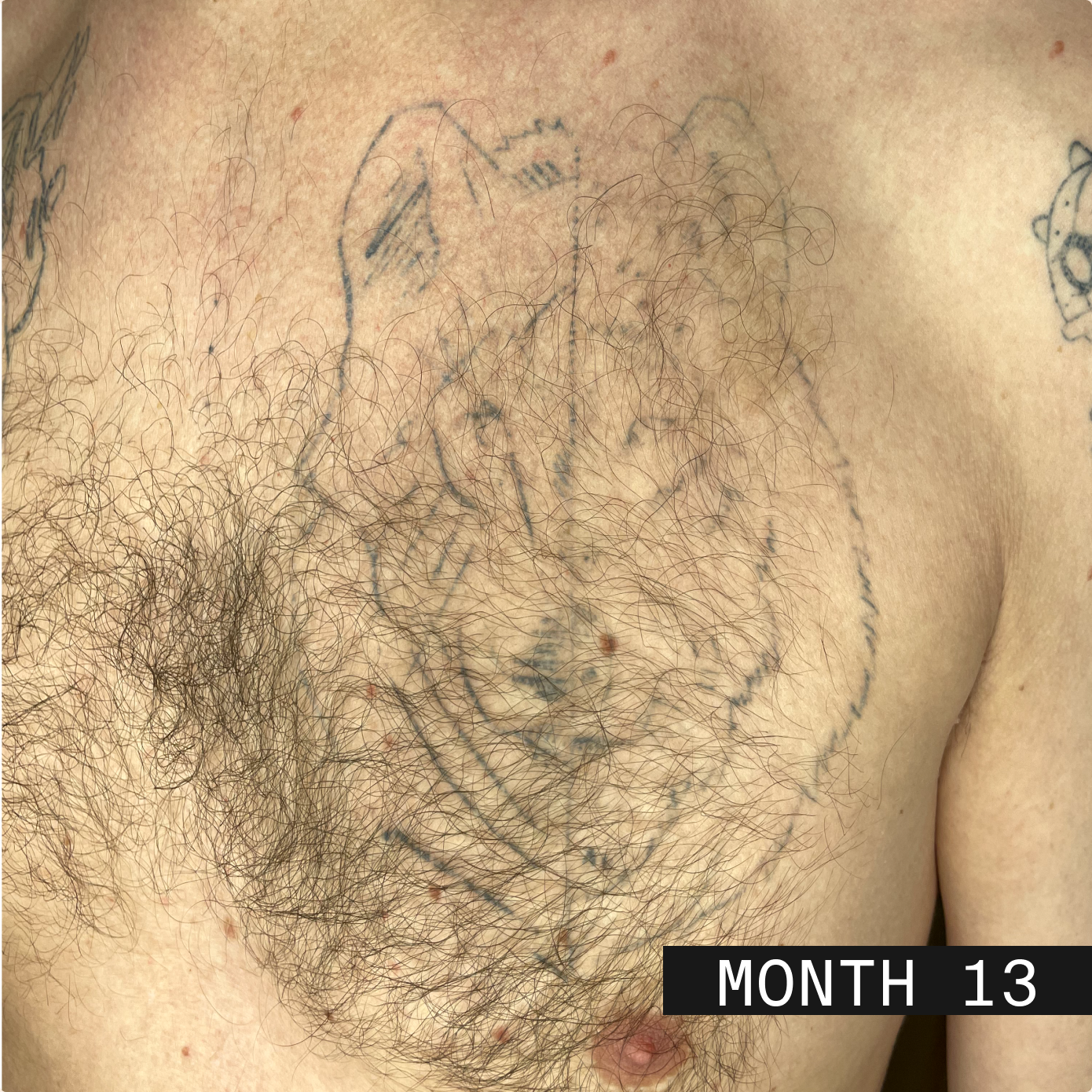
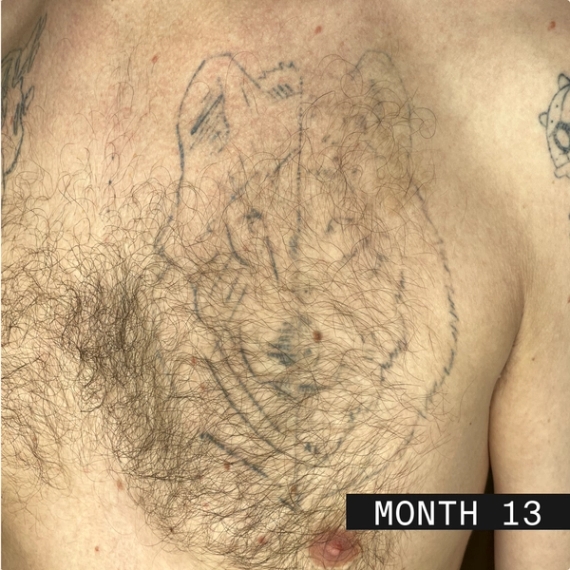
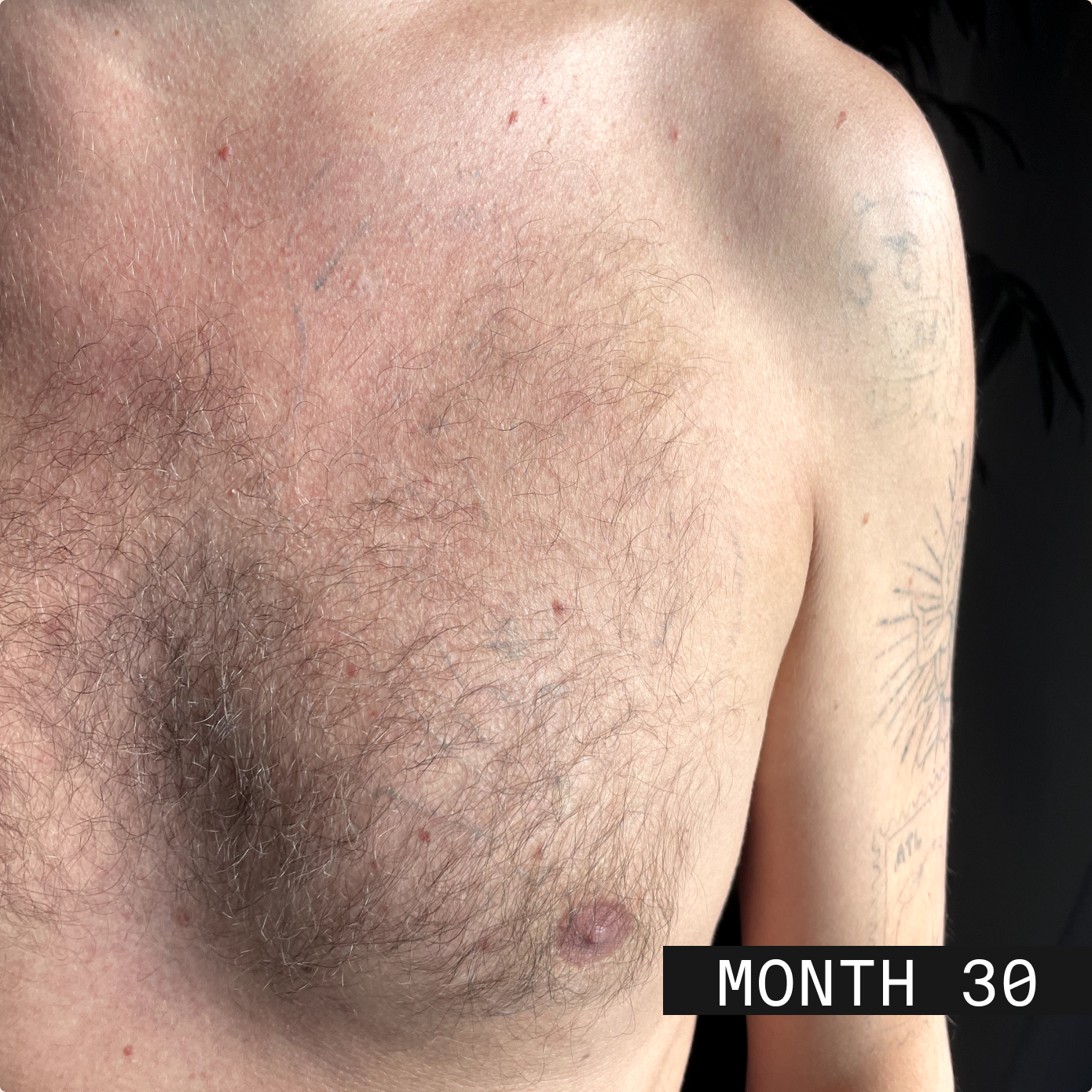
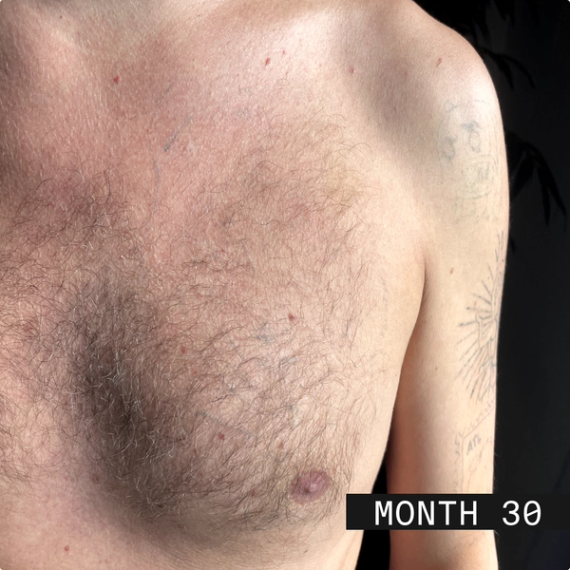
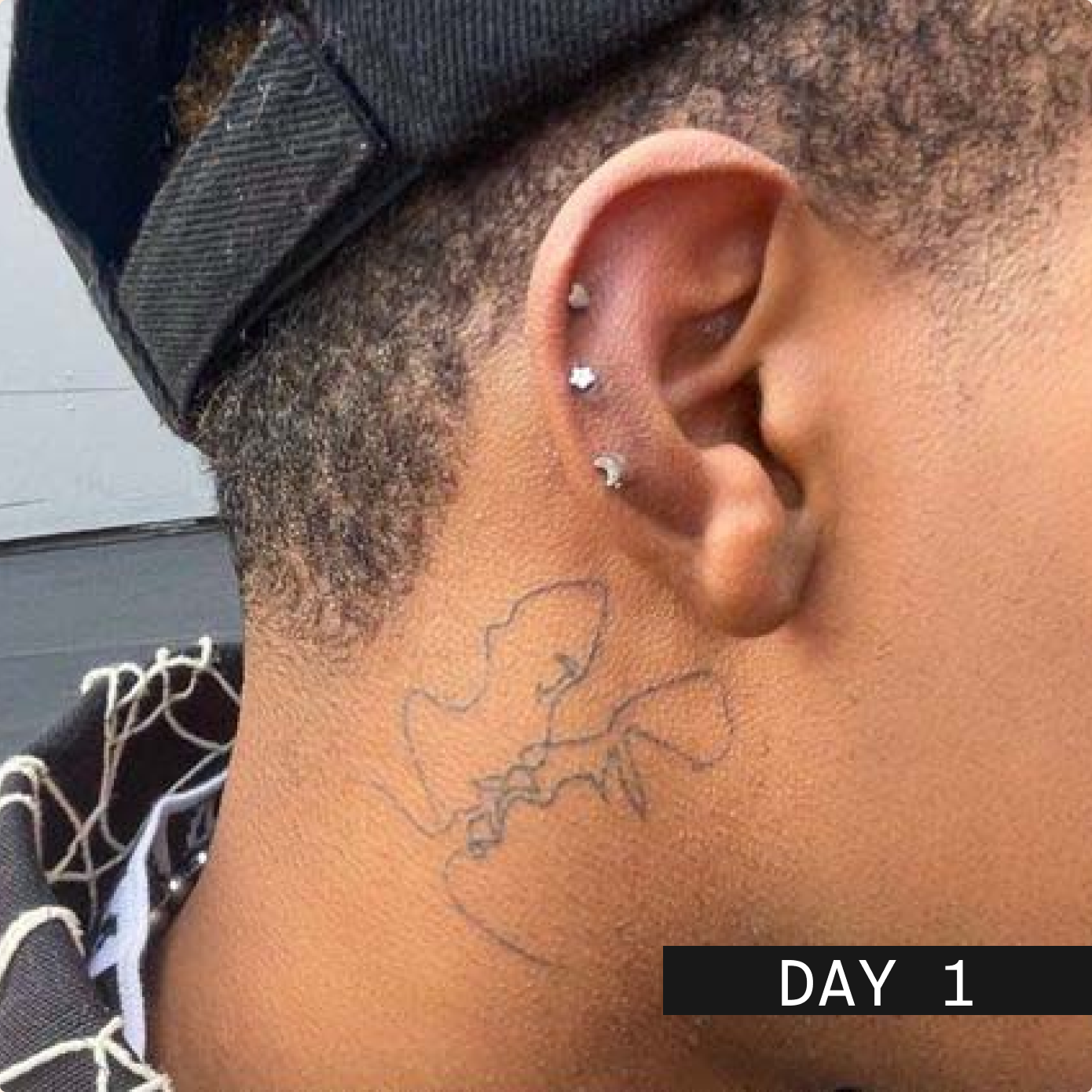
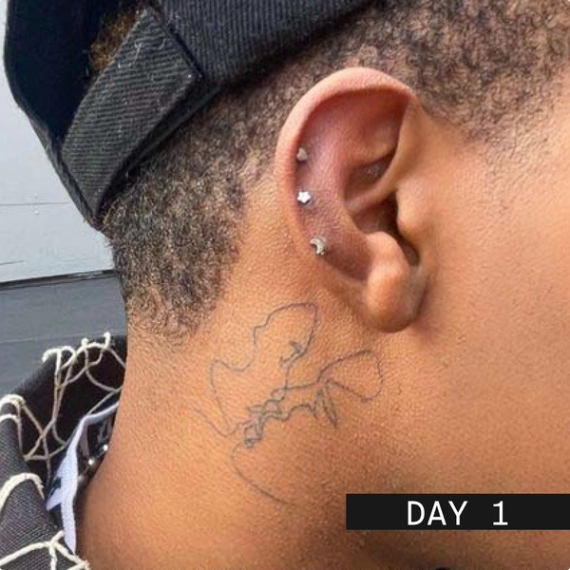


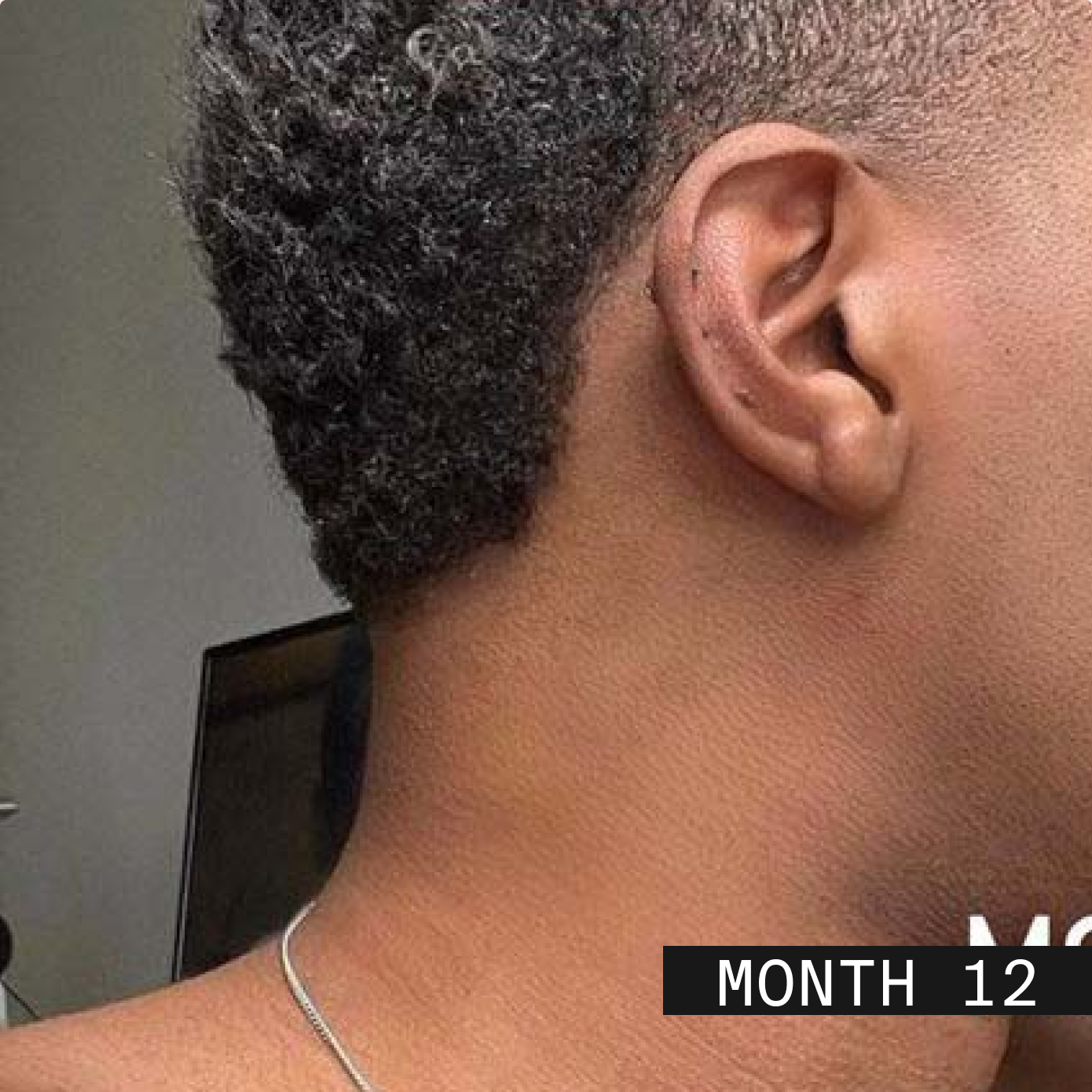

¿Quieres ver más ejemplos de desvanecimiento? Encuéntralos aquí.
Cómo obtener un Ephemeral

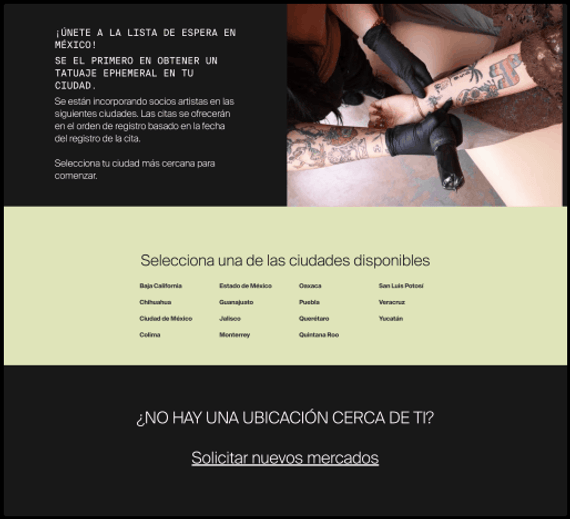
Hazte el tatuaje
¿Interesado en un tatuaje Ephemeral? Es facilísimo.
1. Explora ciudades.
2. Revisa perfiles de artistas.
3. Contacta a un artista.
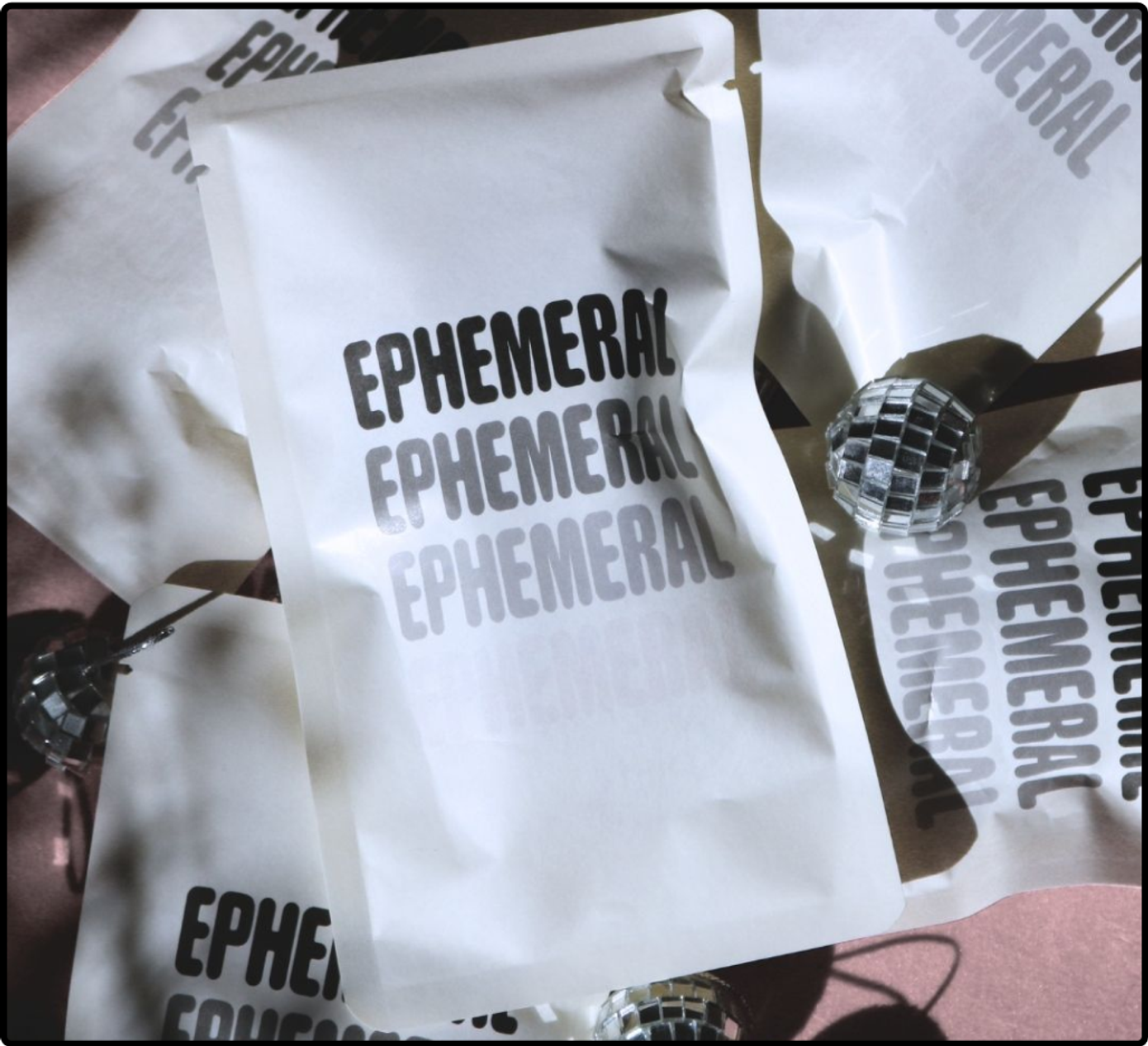

Buy the Ink
¿Eres un artista profesional? ¿Te interesa llegar a nuevos clientes?
Visita el enlace para comprar la tinta o convertirte en socio.


Preguntas frecuentes sobre la tinta
Los tatuajes Ephemeral están diseñados para durar hasta tres años.
El 8 % de los clientes puede esperar que se desvanezcan en el primer año, el 76 % en dos años y el 98 % en tres años.
Los materiales utilizados en la tinta Ephemeral son comunes en alimentos, cosméticos y dispositivos médicos, son 100 % veganos y contienen ingredientes de origen vegetal siempre que es posible. Pasamos los primeros tres años de investigación antes de abrir nuestros estudios, probando y seleccionando los materiales más seguros para usar en nuestra tinta. No utilizamos componentes de metales pesados ni ingredientes conocidos por ser carcinógenos o teratógenos. Como ocurre con todos los cosméticos, pueden surgir alergias u otras reacciones adversas. Recomendamos realizar pruebas de color y de parche antes de su uso. Según la FDA, «aunque varios aditivos de color están aprobados para su uso en cosméticos, ninguno está aprobado para ser inyectado en la piel». Consulta nuestras guías de uso y ubicación. La tinta de tatuaje Ephemeral se suministra en forma estéril y es de un solo uso.
Si experimentas una reacción adversa, por favor contacta a tu tatuador, a tu médico/proveedor de atención médica y comunícate con nosotros en hello@ephemeral.tattoo.
Nuestra tinta tiene dos componentes principales: 1) partículas de tinta hechas de polímeros bioabsorbibles de grado médico (los mismos materiales que se usan en las suturas médicas) y aditivos de color que se utilizan en alimentos y cosméticos. 2) una solución a base de agua para dispersar las partículas de tinta.
Además, usamos ingredientes de origen vegetal siempre que es posible y evitamos componentes de metales pesados o de origen animal.
Sí, nuestra tinta es vegana: no utilizamos ingredientes ni subproductos de origen animal.
Actualmente, todos los tatuajes Ephemeral se realizan en tinta negra. No solo es el color más popular, sino que también es el preferido por la mayoría de los tatuadores y queda fantástico en trabajos de línea fina.
Sí, la tinta Ephemeral funciona en todos los tonos de piel. Los tatuajes Ephemeral aplicados en piel con más melanina pueden desvanecerse más rápido que en piel con menos melanina.
¡Sin importar tu tono de piel, tu tatuaje Ephemeral desaparecerá por completo!
Visita nuestra página Compra la tinta para más detalles.
¡Sí! Visita nuestra página de productos de radioterapia para obtener más información.
Fade FAQ
Nuestra tinta es biodegradable. Las partículas de tinta (tanto permanentes como Ephemeral) son hidrofóbicas, lo que hace que se agrupen en partículas demasiado grandes para ser eliminadas de inmediato: la tinta permanente tradicional permanece en esta forma, mientras que la tinta Ephemeral se descompone gradualmente en partículas más pequeñas, agua y dióxido de carbono a lo largo de tres años.
Una tinta diseñada para desaparecer que se ve igual que un tatuaje convencional: el equilibrio perfecto entre un tatuaje temporal y uno permanente.
SÍ, todos los tatuajes Ephemeral desaparecerán eventualmente.
Dada la naturaleza física y química de los componentes en nuestra tinta y sus tasas de degradación, un tatuaje Ephemeral no puede ser permanente. La tinta Ephemeral se descompone gradualmente en partículas más pequeñas, agua y dióxido de carbono en el transcurso de tres años. Nuestros polímeros de grado médico son los mismos que se utilizan en suturas, que se descomponen de manera natural y son eliminados por el cuerpo.
Los tatuajes Ephemeral se descompondrán y serán eliminados naturalmente por cualquier persona con agua en el cuerpo ←. ¡Tú calificas!
El desvanecimiento es diferente para cada persona. Lo primero que notarás cuando tu tatuaje Ephemeral comience a desvanecerse es un cambio en la saturación de la tinta, que generalmente significa una transición de negro oscuro a gris claro.
La forma en que el diseño afecta el desvanecimiento es simple: a medida que añades más tinta al tatuaje, generalmente prolongas el tiempo de desvanecimiento. Si quieres un diseño con un desvanecimiento más rápido, elige algo simple, con líneas finas y menos detalles. Si prefieres un diseño que dure más tiempo, opta por líneas gruesas, sombras y detalles pesados.
Tatuar requiere una gran habilidad, ya que el artista tiene entre 1 y 2 mm de profundidad en la piel para trabajar. Transferir la tinta de manera uniforme en esta capa delgada de piel es crucial para asegurar que el diseño del tatuaje se desvanezca con la misma integridad en todo el diseño. Aquí tienes algunos pasos para asegurar que el desvanecimiento sea tan deseable como el diseño inicial del tatuaje:
Paso 1: Diseña el tatuaje pensando en el desvanecimiento: recuerda que las líneas más gruesas se desvanecen más lento que las finas, y el punteado demasiado denso puede superponerse, transfiriendo más tinta de la necesaria para lograr el mismo efecto.
Paso 2: Sigue cuidadosamente los pasos de cuidado posterior: una curación difícil o inconsistente puede causar huecos en el diseño, que se verán todavía más cuando el tatuaje comience a desvanecerse.
Paso 3: Evita productos o actividades de cuidado posterior que puedan irritar tu piel. Rascar o raspar compromete el diseño del tatuaje. Evita piscinas y el mar durante al menos un mes o hasta que tu tatuaje esté completamente curado, lo que tome más tiempo. Hidrata y usa medidas de protección como bloqueador solar o ropa que reduzca el roce o bloquee el sol.
Paso 4: Áreas del cuerpo, como las costillas, son conocidas por su dificultad para transferir la tinta. Los tatuajes que cruzan diferentes partes del cuerpo pueden resultar en un desvanecimiento desigual. Algunos ejemplos son un tatuaje que rodea el brazo, uno que va desde el antebrazo hasta la muñeca o uno que va de las costillas a la espalda.
Paso 5: Trabaja junto a tu artista; mantente lo más quieto posible al hacerte el tatuaje.
Los métodos de eliminación con láser fueron desarrollados específicamente para la eliminación de tintas de tatuajes permanentes. Ephemeral está diseñado para descomponerse y ser eliminado por el cuerpo de forma gradual. Actualmente, Ephemeral no cuenta con ningún método aprobado, seguro o eficaz para acelerar el desvanecimiento, incluido el láser, que podamos recomendar con confianza.